2016 Chevrolet Camaro Turbo: First Drive

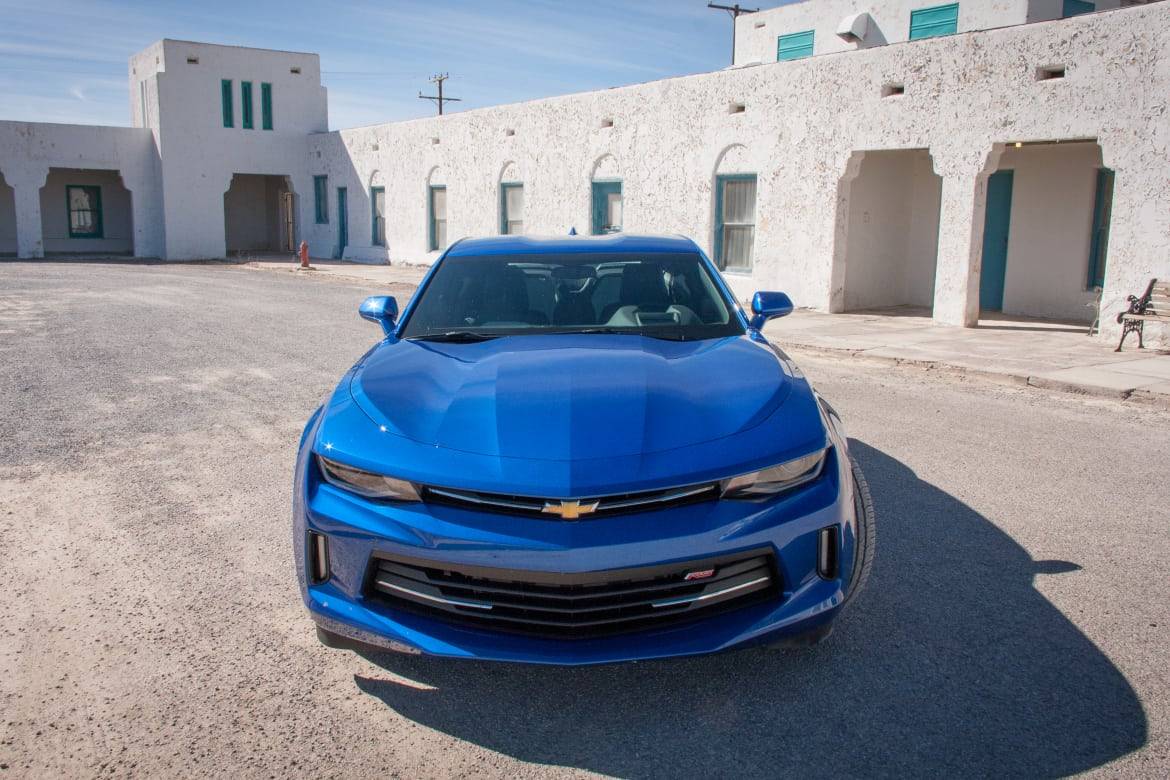
CARS.COM — The 2016 Chevrolet Camaro was introduced in 2015 as a fully redesigned coupe with a choice of V-6 and V-8 engines. Now Chevrolet has added a turbocharged four-cylinder engine and a redesigned convertible to the mix.
Related: 2016 Chevrolet Camaro: First Drive
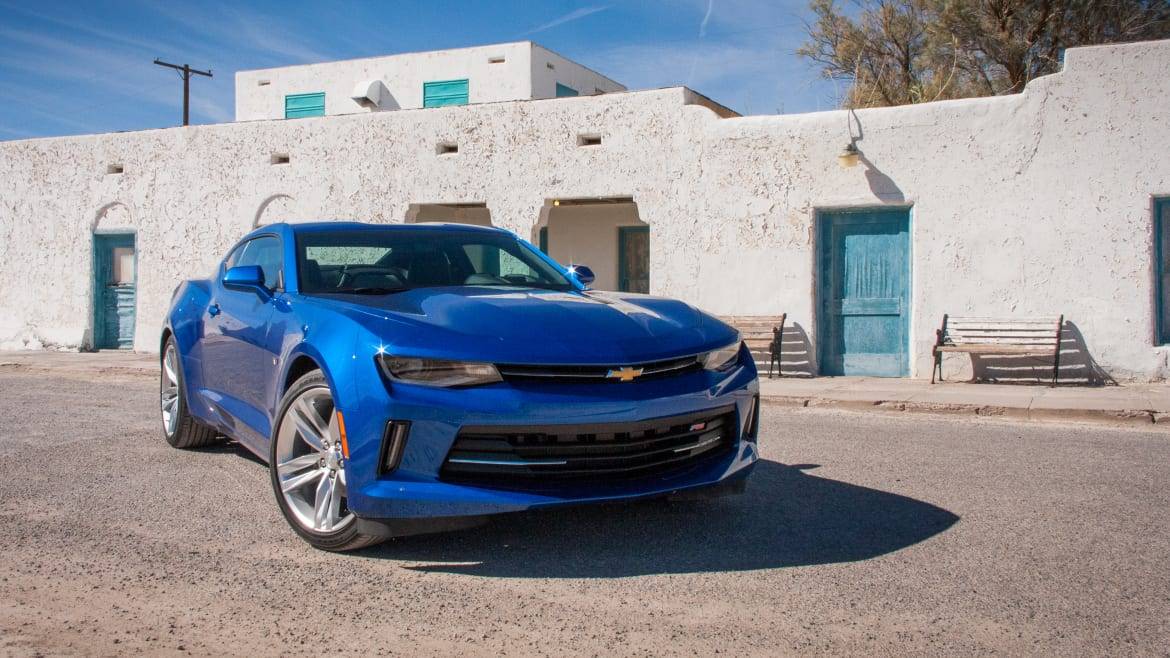
Chevrolet needed a turbo four for the Camaro to compete with the one Mustang added, continuing their decades-long game of “everything you can do, I can do better.” The new base engine in the Camaro LT is a 275-horsepower, turbocharged 2.0-liter four-cylinder that makes 295 pounds-feet of torque. It comes with a six-speed manual standard, while a new eight-speed automatic with paddle shifters is available.
This was not our first dance with the redesigned 2016 Camaro. Cars.com put two versions head-to-head with its main muscle-car competition: the Ford Mustang and Dodge Challenger, in both small-engine and V-8 forms. The V-8 powered Camaro SS took home first place in our V-8 Muscle Car Challenge, and the V-6 Camaro came in second behind the EcoBoost turbo-four Mustang in the Small-Engine Muscle Car Challenge. For even more details about the 2016 Camaro, check Cars.com Senior Road Test Editor Joe Bruzek’s full review of the SS model here.
I took our first crack at the turbo-four Camaro on the Spring Mountain racetrack in Pahrump, Nev., and then on a series of long highway routes that stretched through the heart of California’s Death Valley.
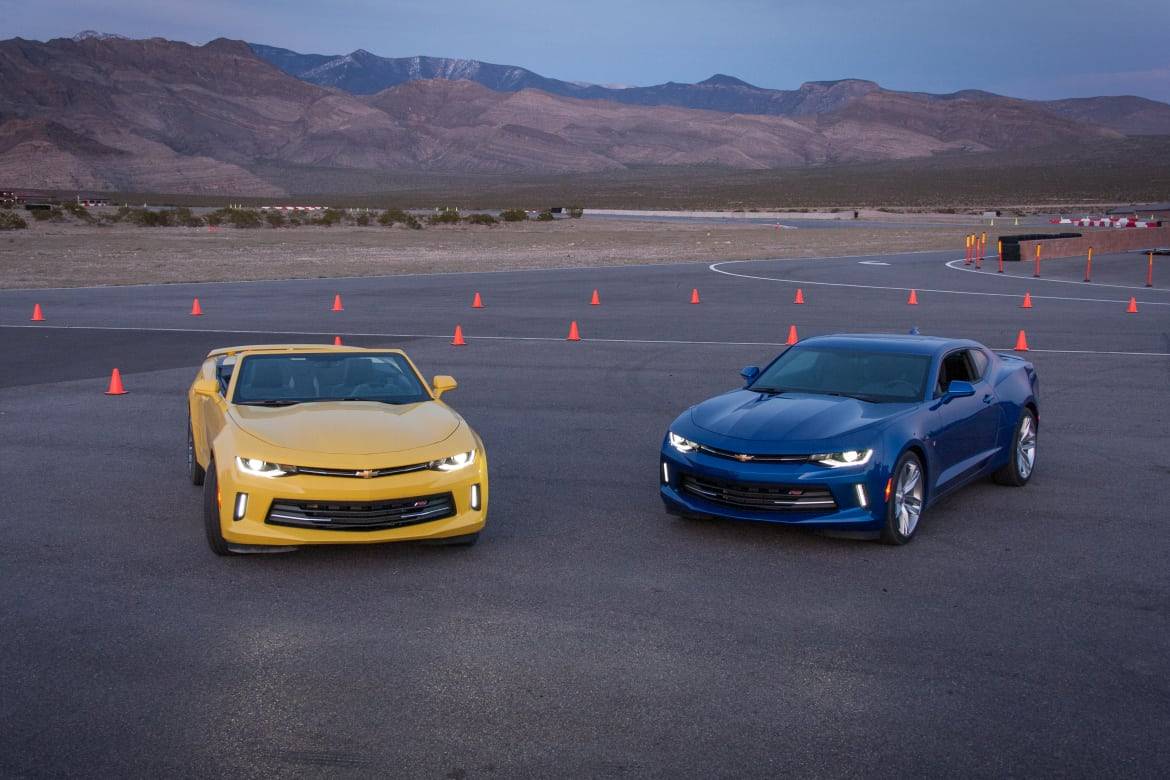
On the Track
The morning hot laps took place on Spring Mountain’s west track, a tight course that served to highlight the turbo four-cylinder Camaro’s handling and balance rather than its top speed. And here, as expected, the Camaro coupe excelled. During the Cars.com V-6 and V-8 Challenges, our judges lauded both versions of the Camaro for their manners on the track. With the turbocharged engine those same characteristics shone through.
The engine isn’t the only thing Chevy downsized; four-cylinder versions of the coupe are 96 pounds lighter than the 2016 LT V-6 and 390 pounds lighter than the 2015 Camaro with a V-6. Combine the weight loss with suspension and stiffness improvements, and the 2016 Camaro is as at home on the track as on the street.
Driving the 2016 model, you notice that turn-in is quick and happens without drama. Chevrolet had a 2015 Camaro V-6 on hand to drive for a back-to-back comparison. Last year’s model felt much more nose-heavy and tended to understeer, especially on turns that required you to carry more speed. I found no such issues with the new Camaro turbo which stayed flatter and was less prone to understeer, even if you slightly overcook it into a corner.
For this course, the engine put down plenty of power without too much noticeable turbo lag. I was impressed by the engine’s responsiveness and it really comes alive right above 3,000-3,500 rpm. On a larger circuit, I’d prefer to wring out an SS with its large V-8, but the four-cylinder matched the car and this track perfectly.
I sampled both transmissions and found the automatic bangs out shifts at a decent clip. I shifted with the paddles the whole time, my preference because LT models do not come with a Track setting among their selectable driving modes (the SS does). I preferred the six-speed manual in this environment, however, even though the shifter’s throws are a little long for my taste.
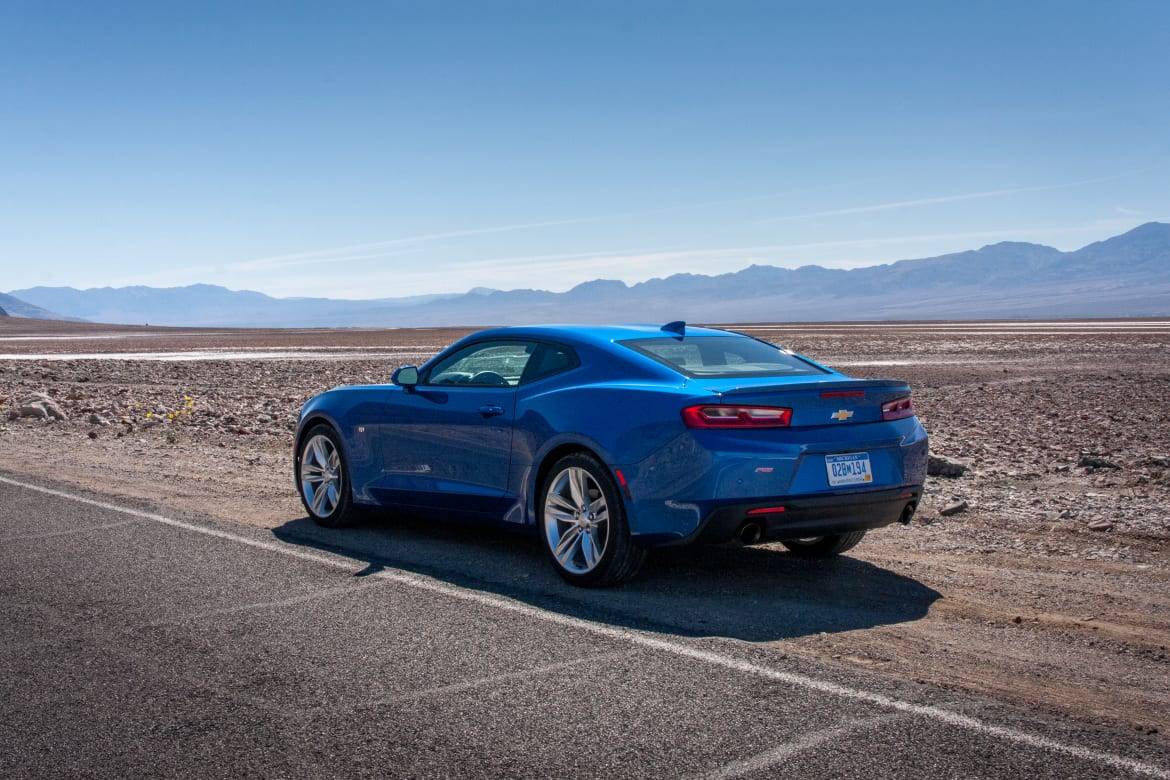
On the Street
After the track, I hit the highway heading into Death Valley to get a feel for the turbo on the road. The engine offers plenty of power for both passing maneuvers and spirited driving. The Camaro is very docile at lower rpm, but a quick downshift or blip of the pedal is all it takes to get moving — it is pretty responsive on the street as well as the track.
I drove both transmissions on the road, too, but there I actually prefer the automatic, which is a rarity for me. It is a well-sorted transmission. At our Challenge, one tester called it the best automatic of the bunch. It didn’t hunt for gears and was well-suited to a long cruise. If I did want to choose my gears, the paddles were there.
One thing that did not improve in the Camaro’s redesign: outward visibility — to both the front and rear — a unanimous sticking point for our editors. It’s still the case that if you look over your shoulder, you get an eyeful of pillar on both sides, even in the convertible. There is one exception to this however …
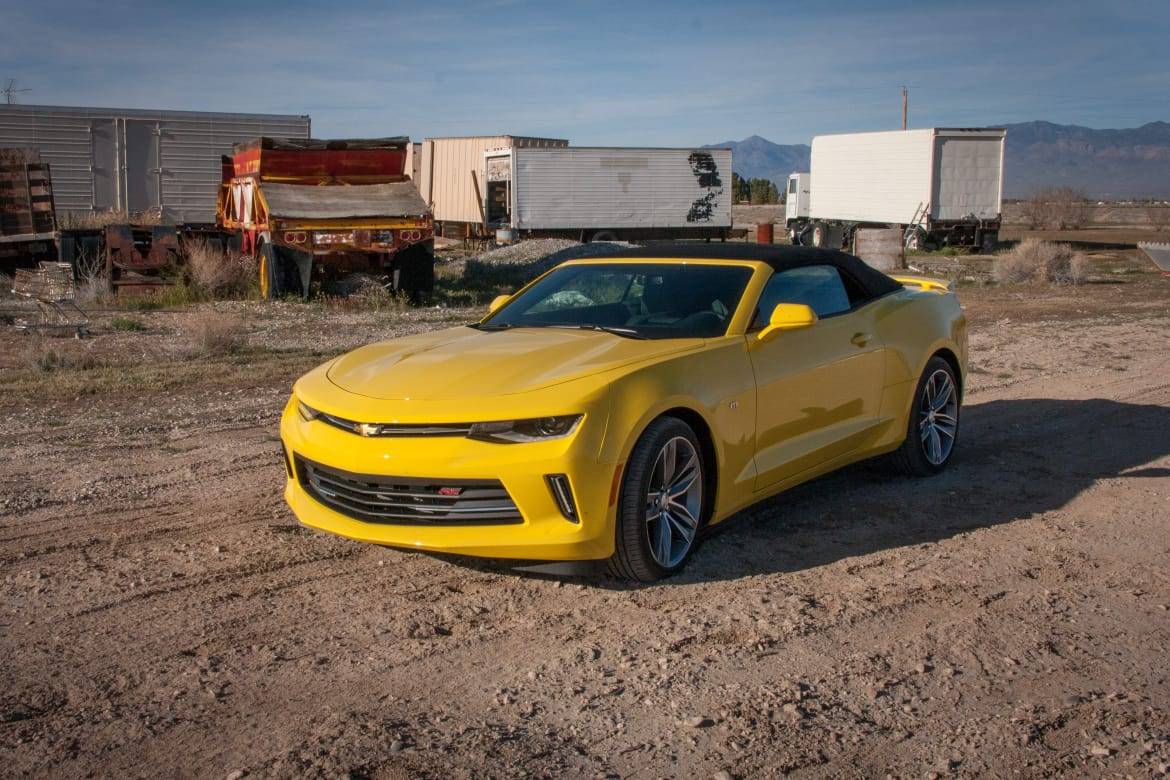
With the Top Down
I also sampled the convertible versions of the turbo (automatic and manual), and they solved the visibility problem instantly — just put the power soft top down, which can be done at speeds up to 30 mph.
Chevrolet engineers created a modular architecture for the new Camaro that allows them to add or remove pieces where needed. For convertible models, that means adding two underbody braces and other reinforcements to retain the structural rigidity of the coupe.
Although I wasn’t able to get the convertible on the track to see how it stacks up there to the coupe, the road experience with the convertible was comparable to that of the coupe. It did not feel like the suspension or handling were compromised, which is true in some competitors. At speed, there was more road and wind noise, but the soft top offers OK isolation. However, my preference when driving the convertible always will be with the top down. And if you drop the top, the Camaro’s rear visibility issues disappear.
Conclusion
Between the two driving experiences, I enjoyed the Camaro more on the track. The well-sorted dynamics and lower weight of the new generation really shine when the car is pushed on a tight, technical circuit — not something that could be said about previous Camaros.
I didn’t find the four-cylinder Camaro to be underpowered — it handled both portions of the drive well. It doesn’t have the same breathtaking exhaust note, nor does it accelerate with the same urgency that you’d find in the SS with its V-8, but that’s to be expected. The four-cylinder delivers a solid mix of performance and fuel economy — an EPA-estimated 31 mpg on the highway with the automatic transmission. It’s a solid addition to the Camaro lineup, and one that ups the ante with Ford once more.
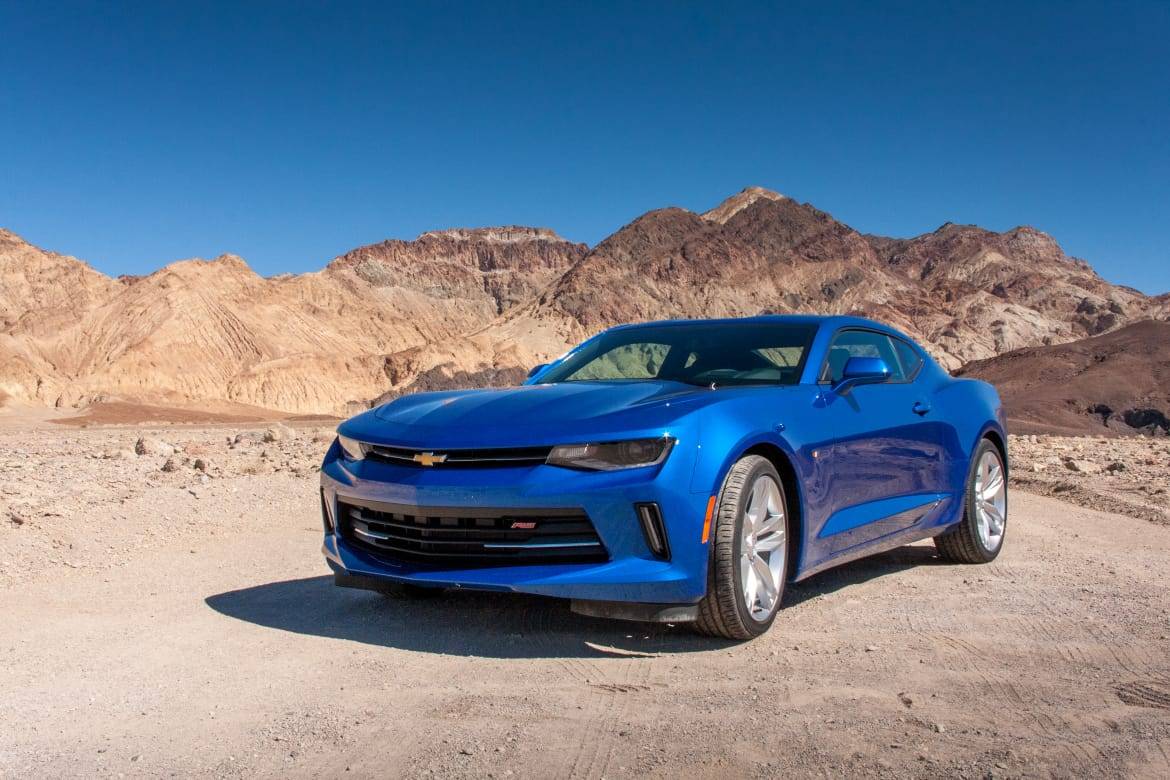
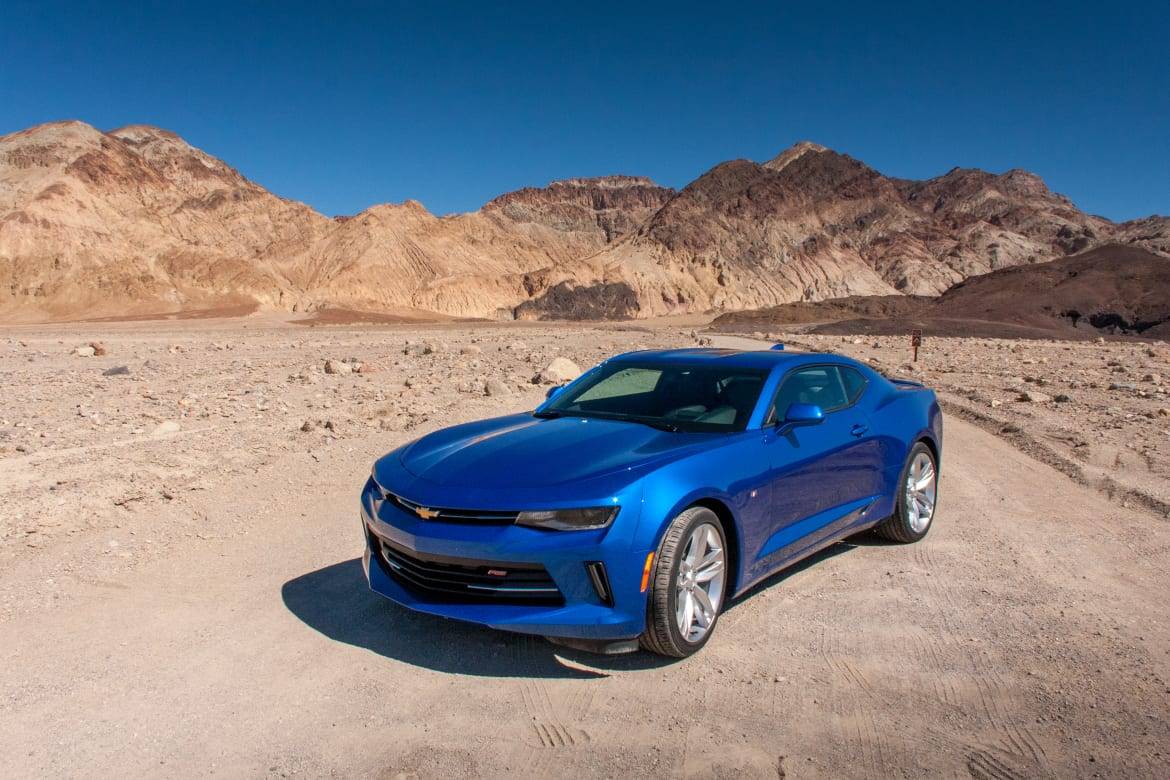
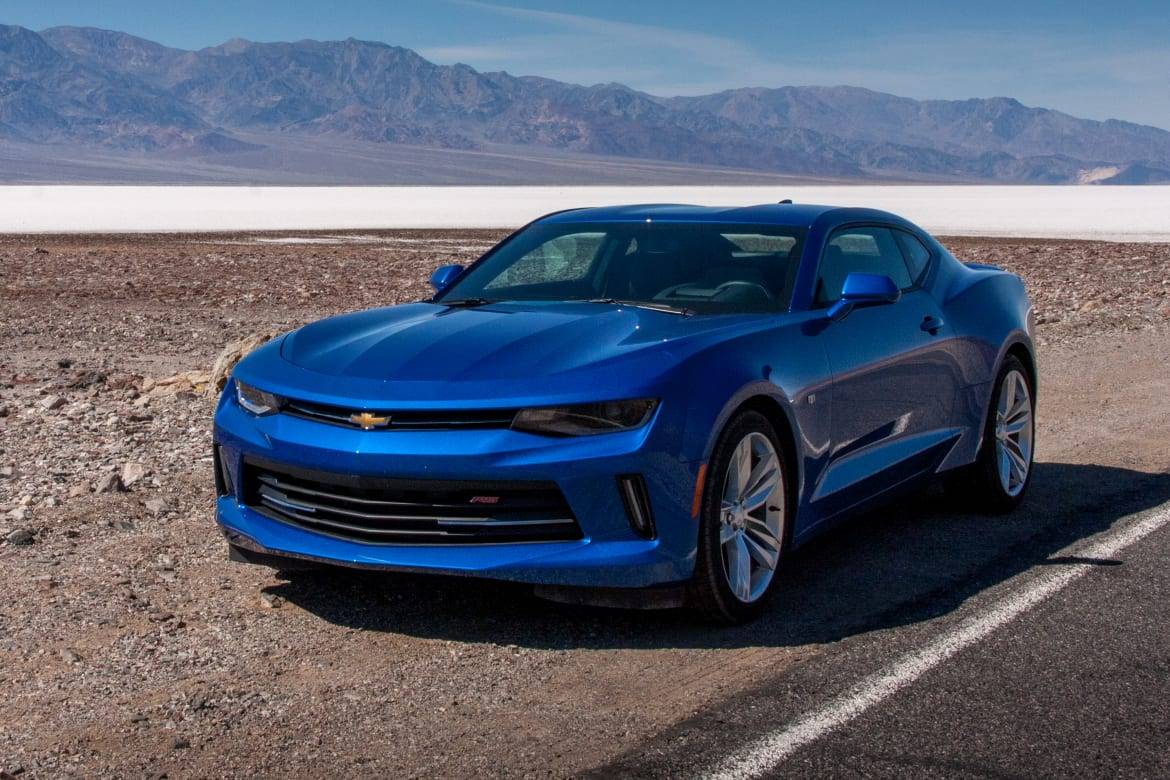
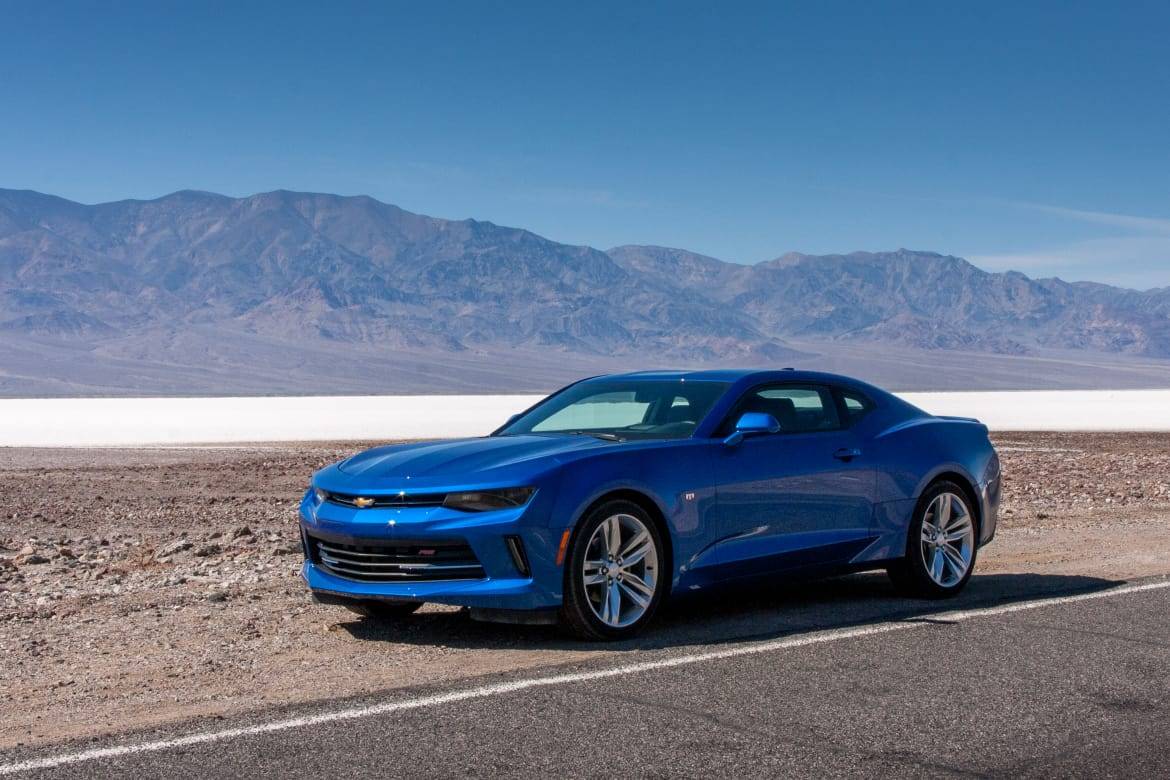
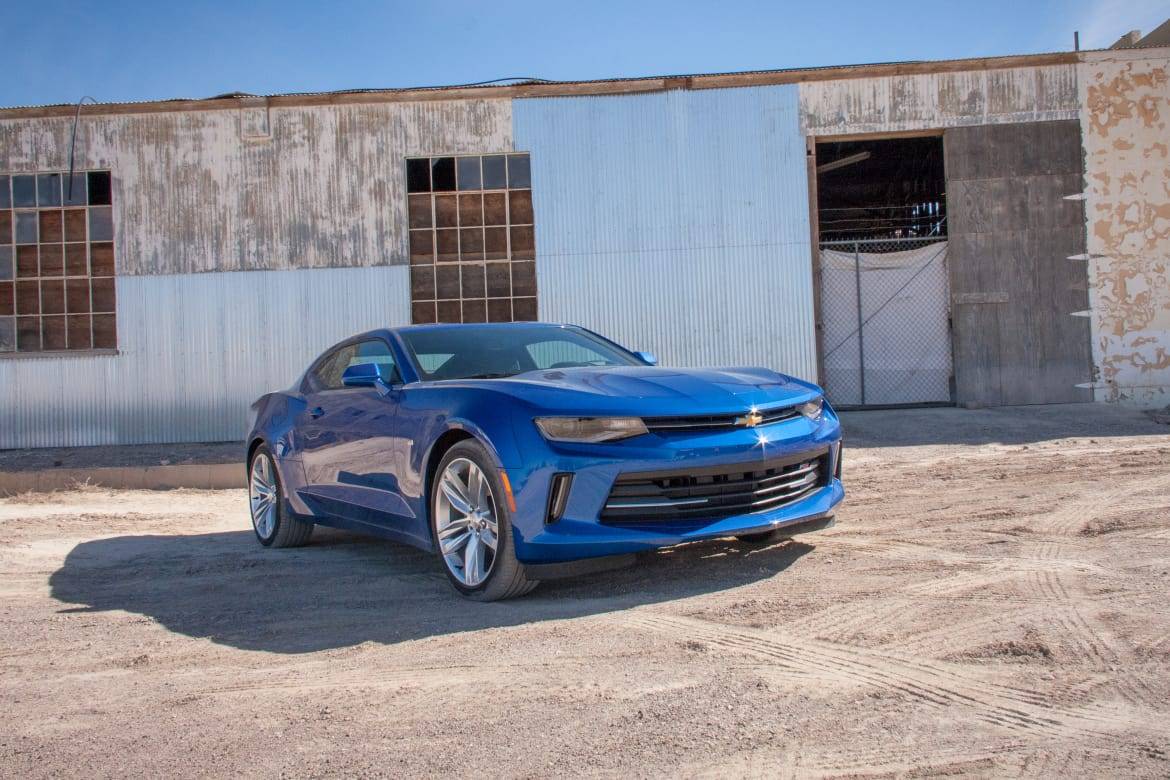
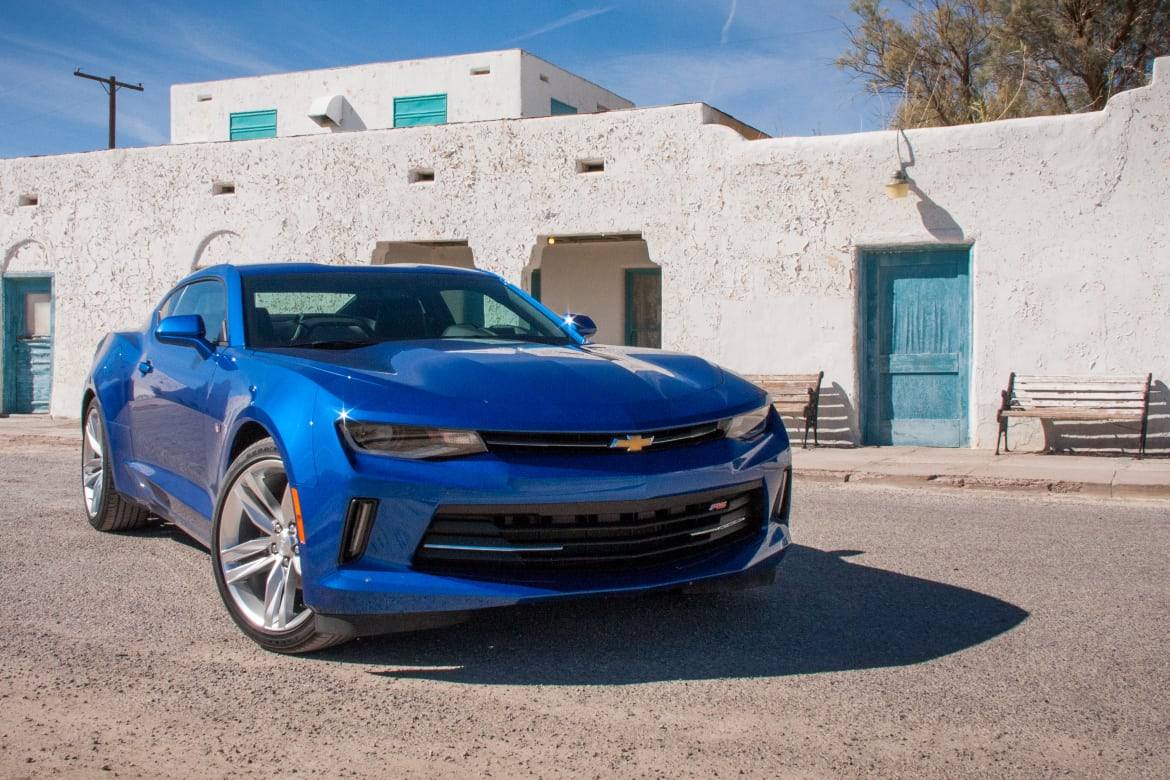
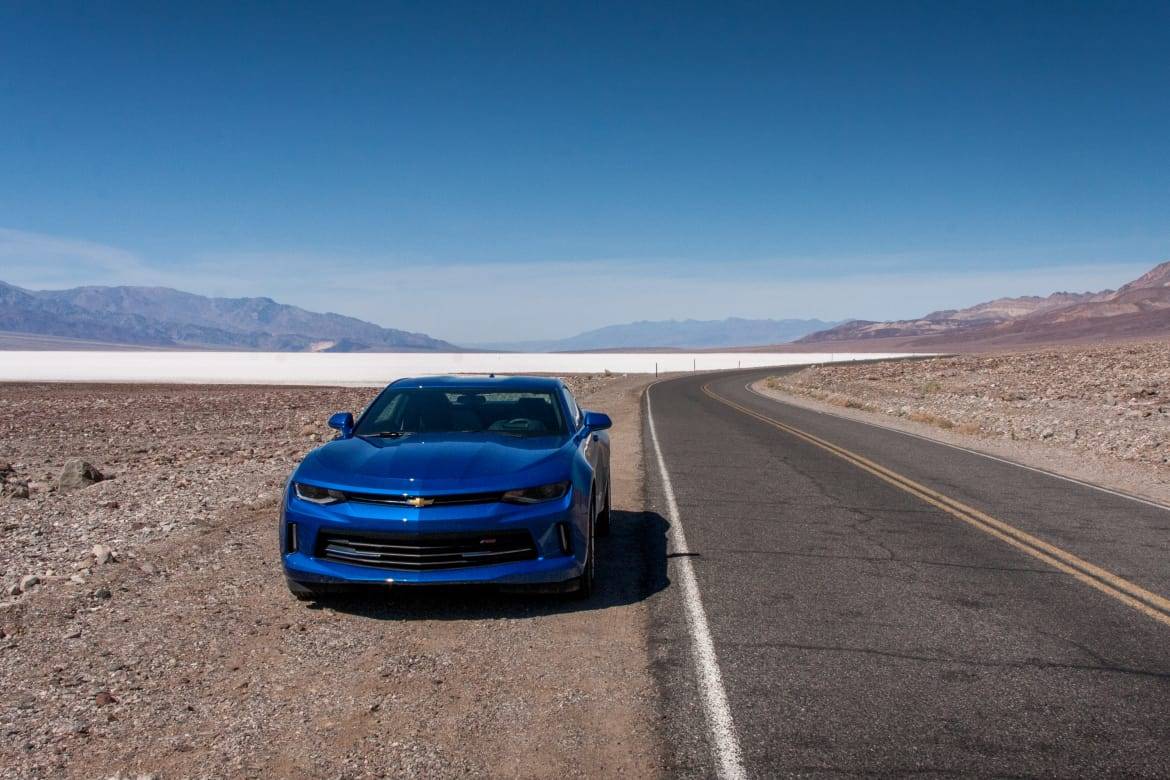

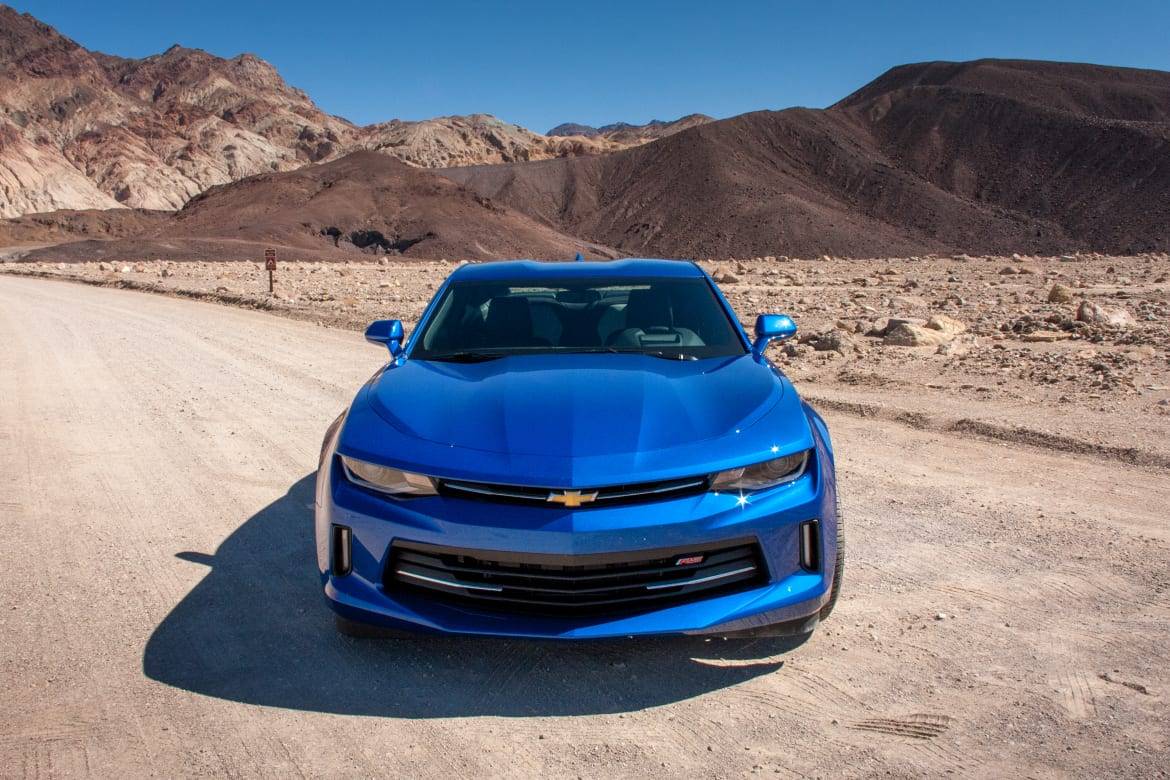
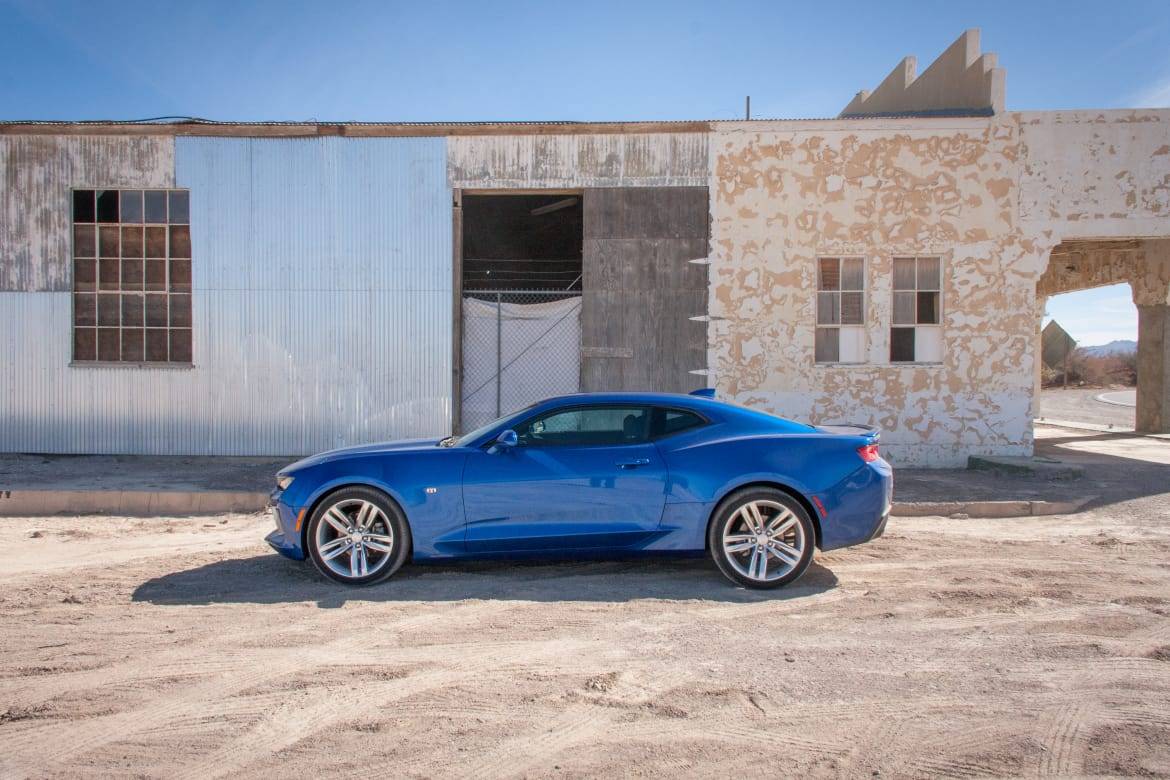
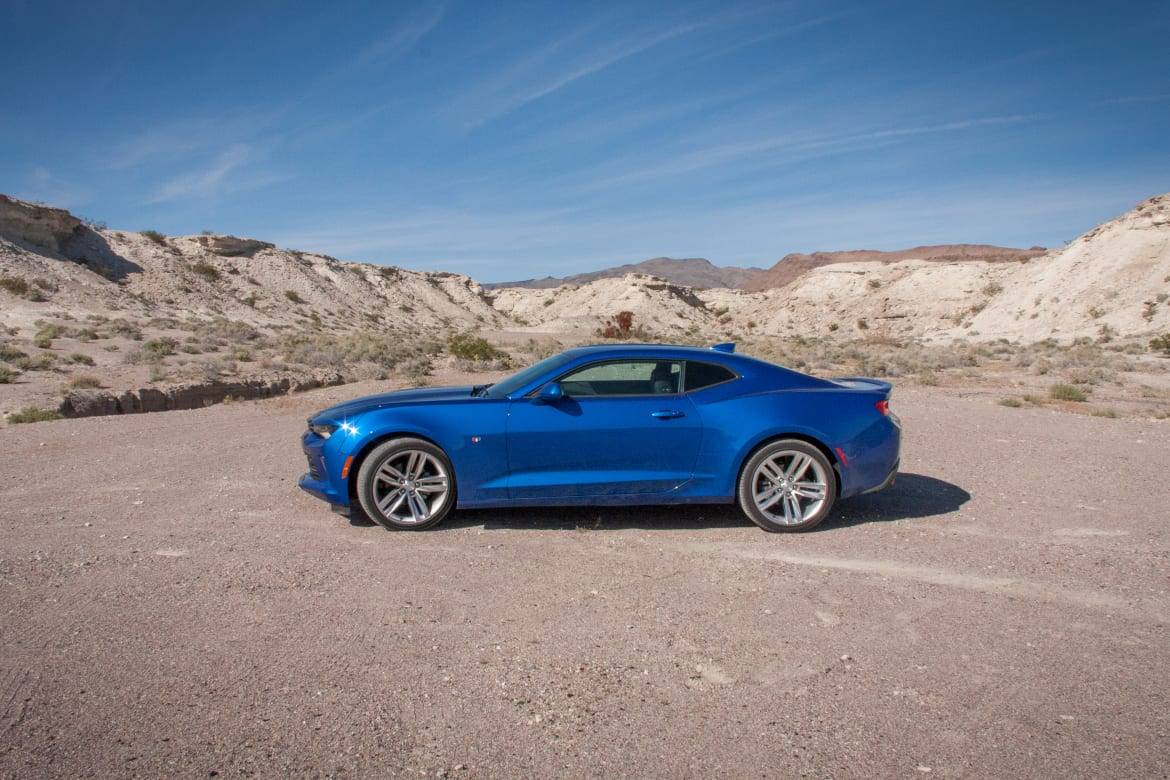
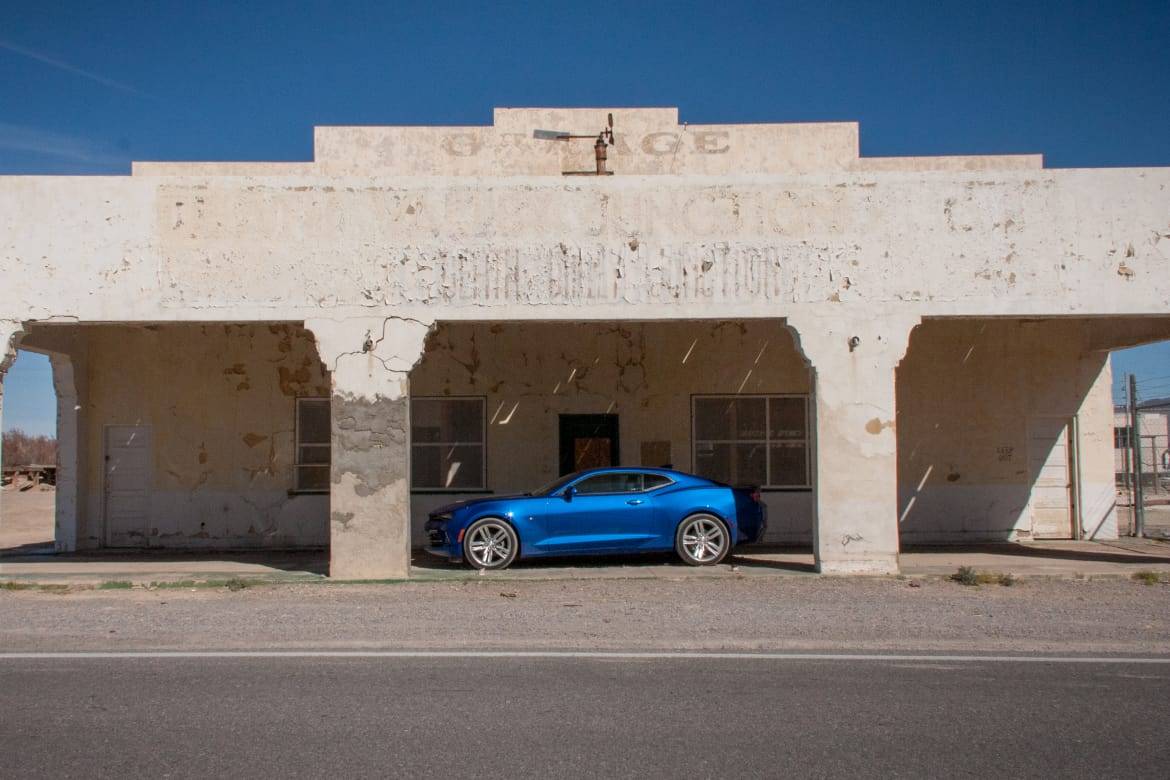
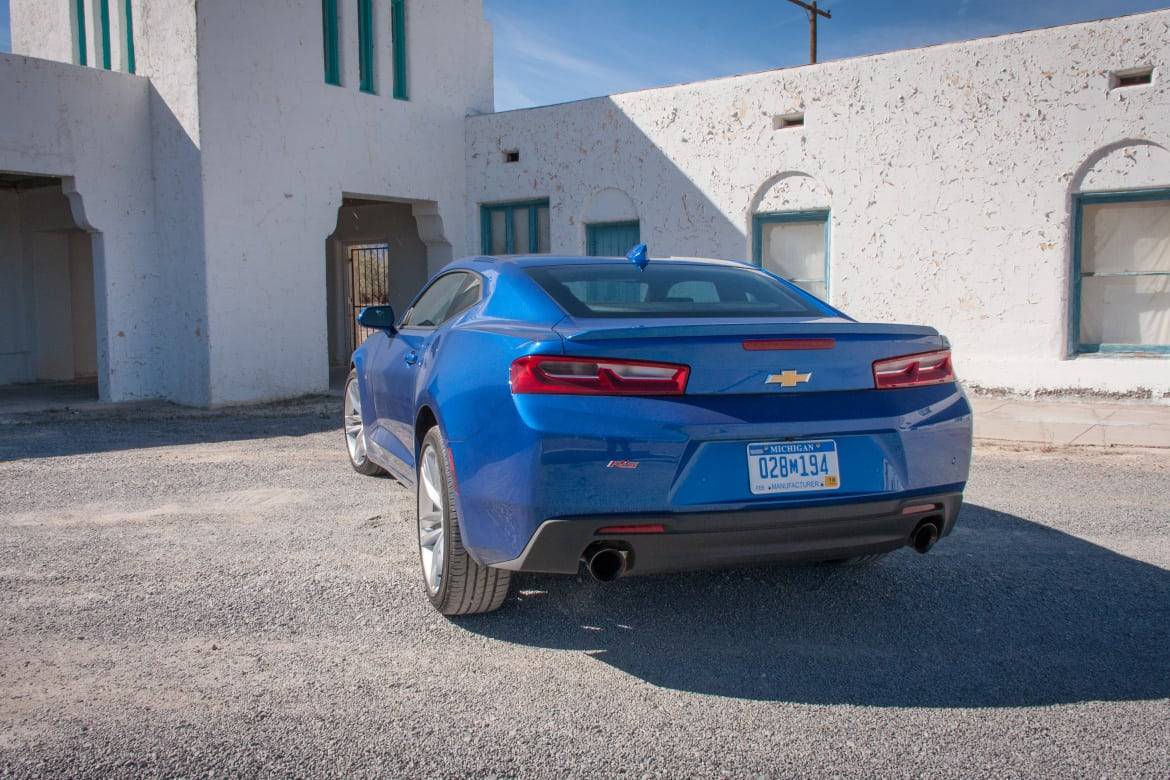

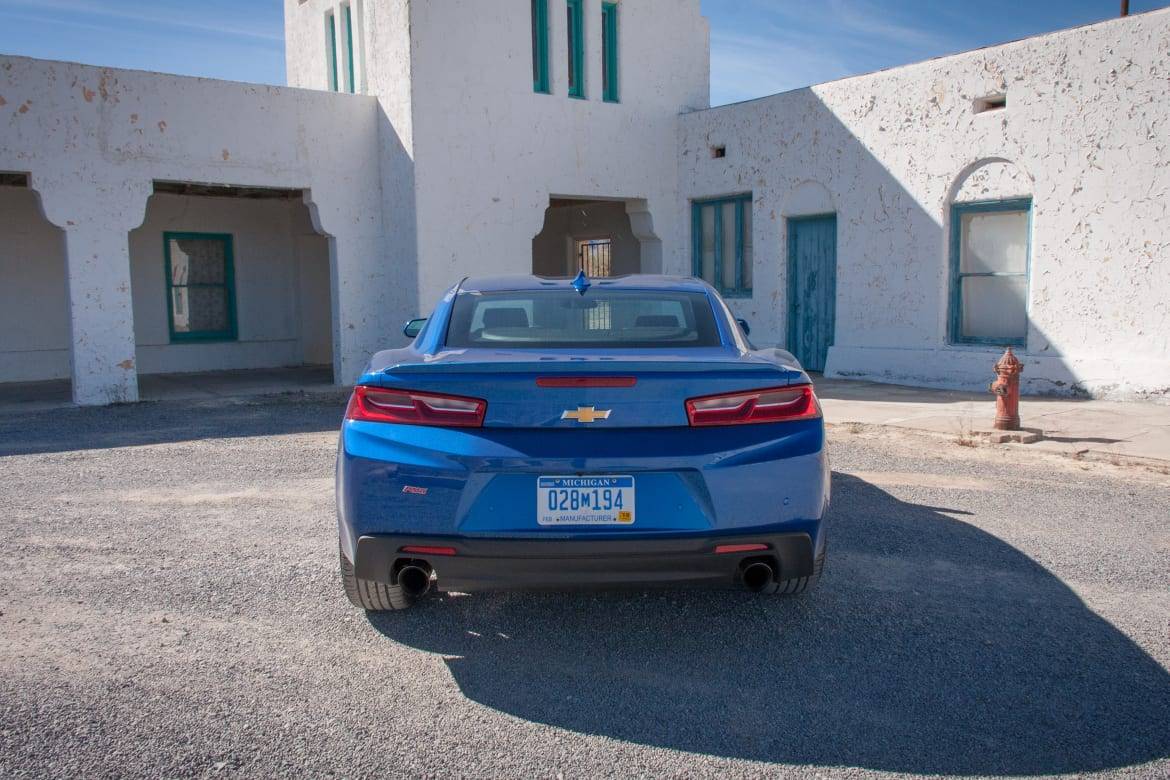
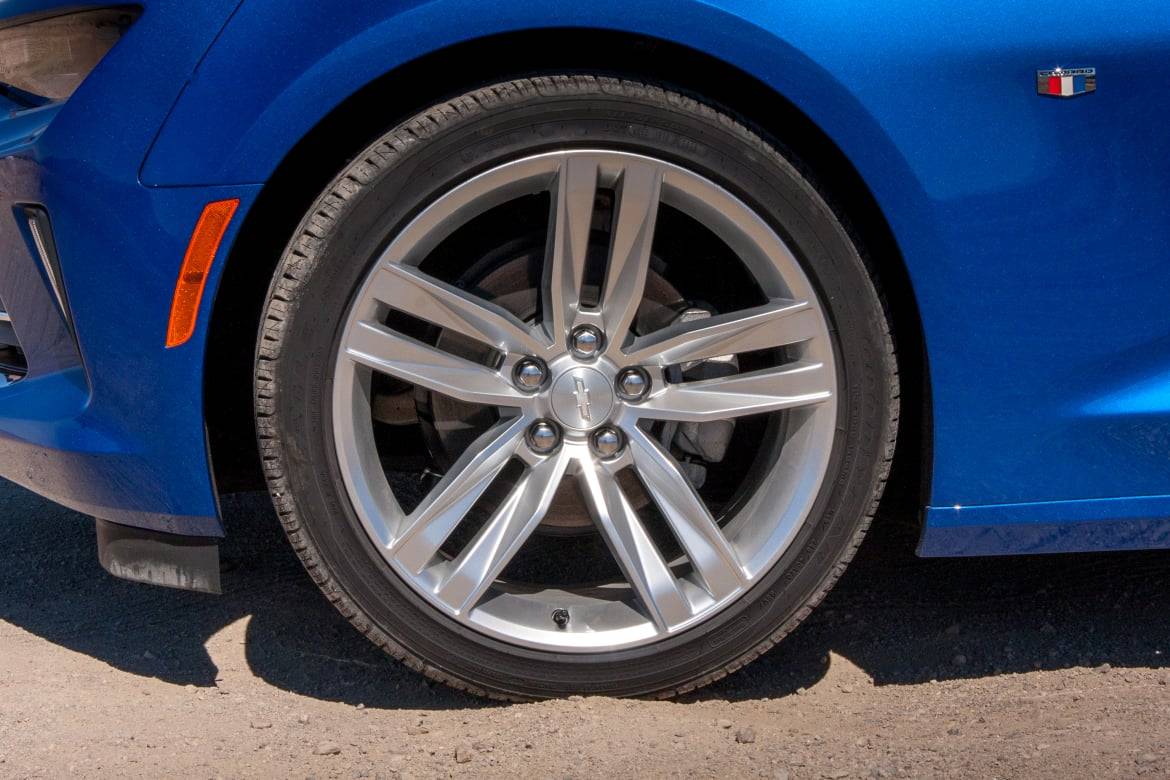
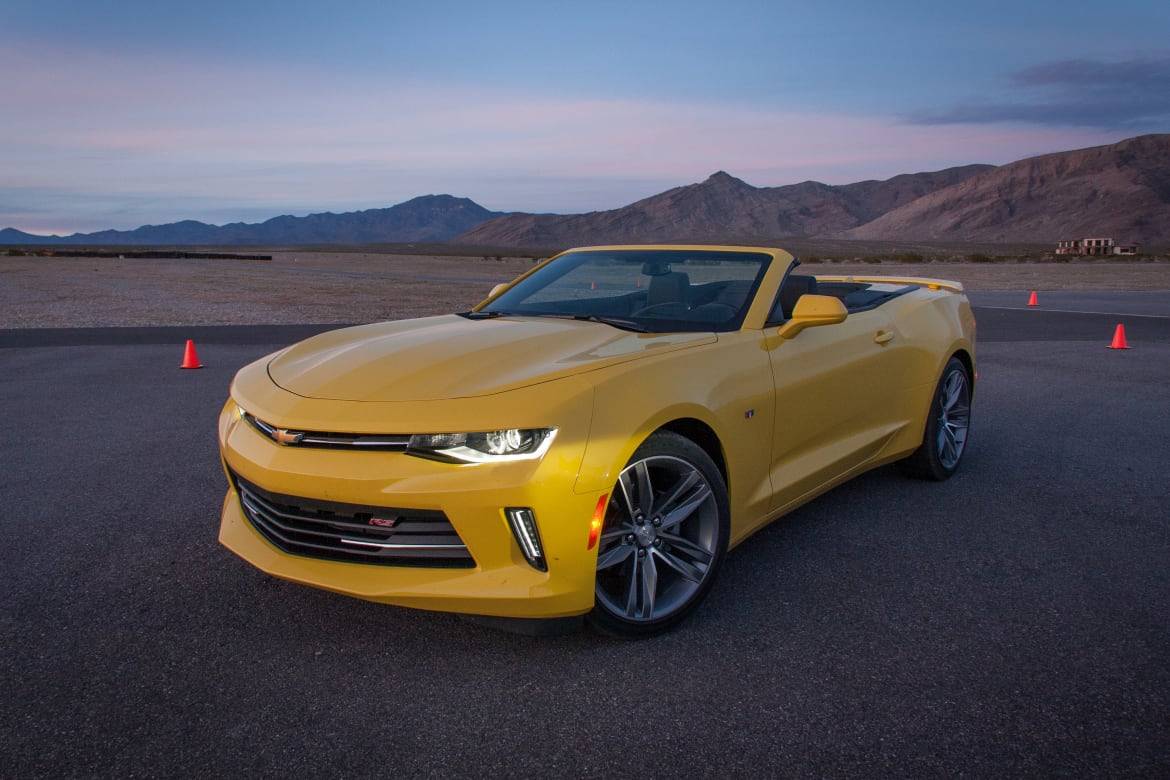

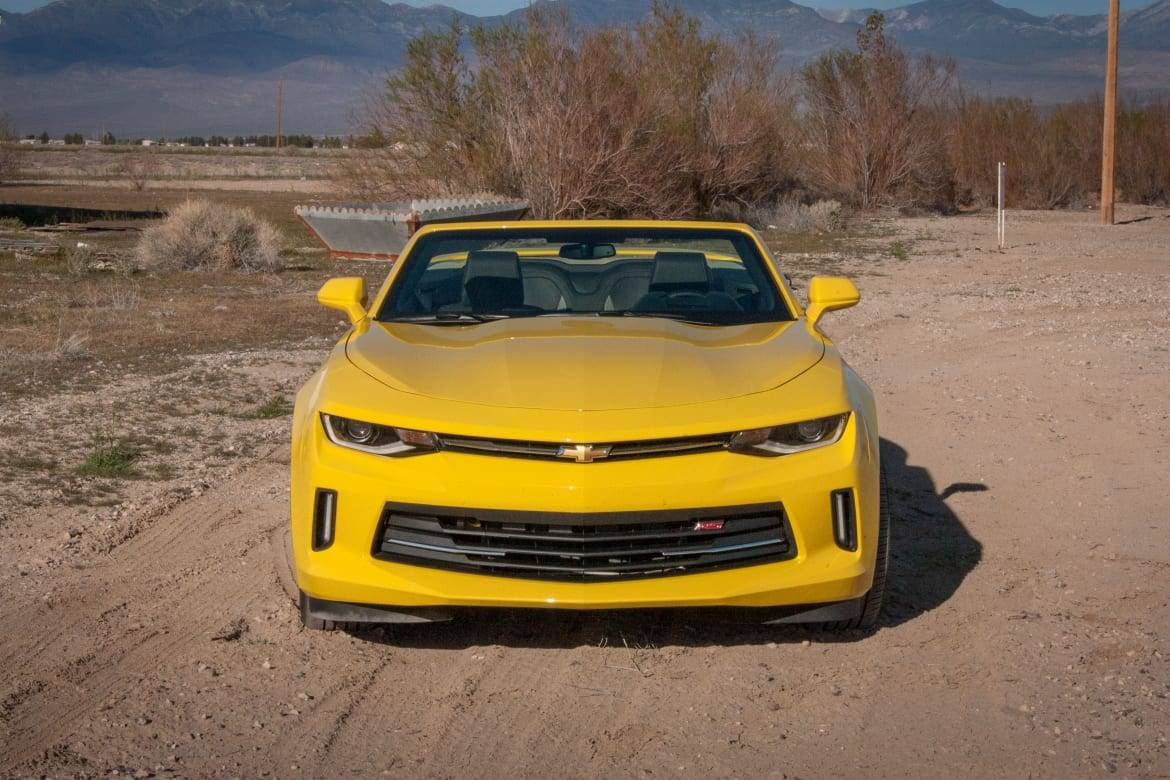
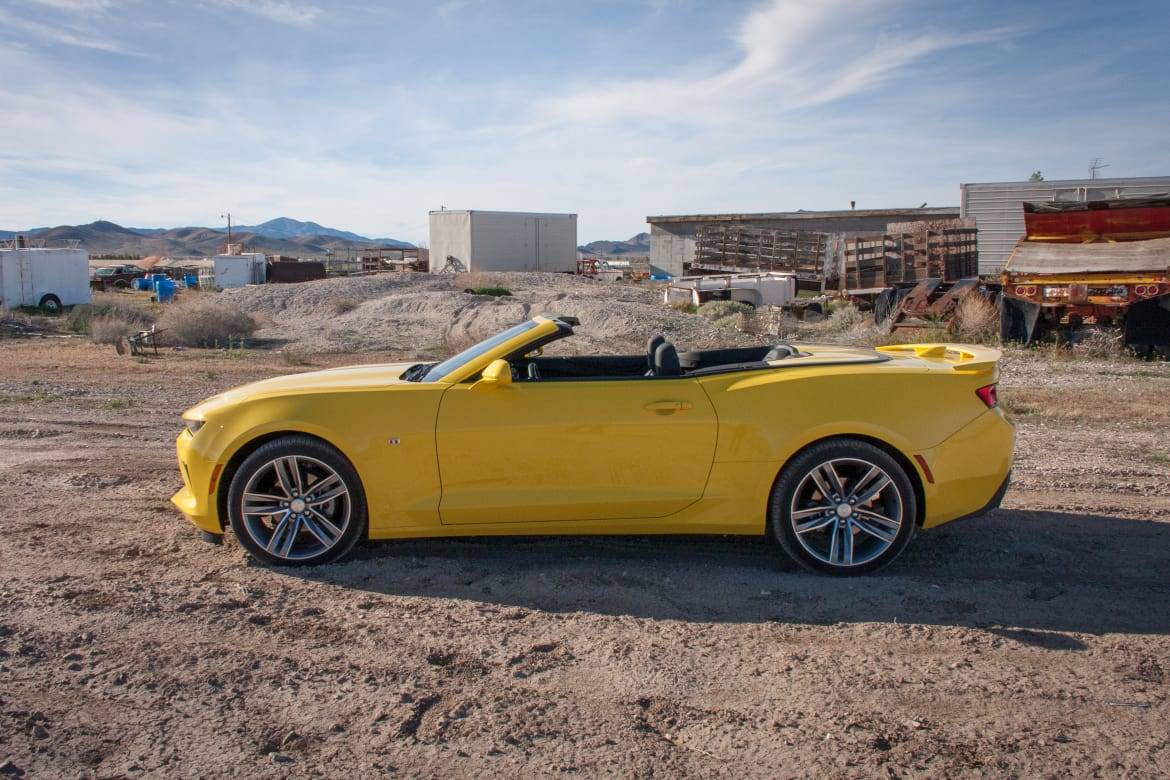
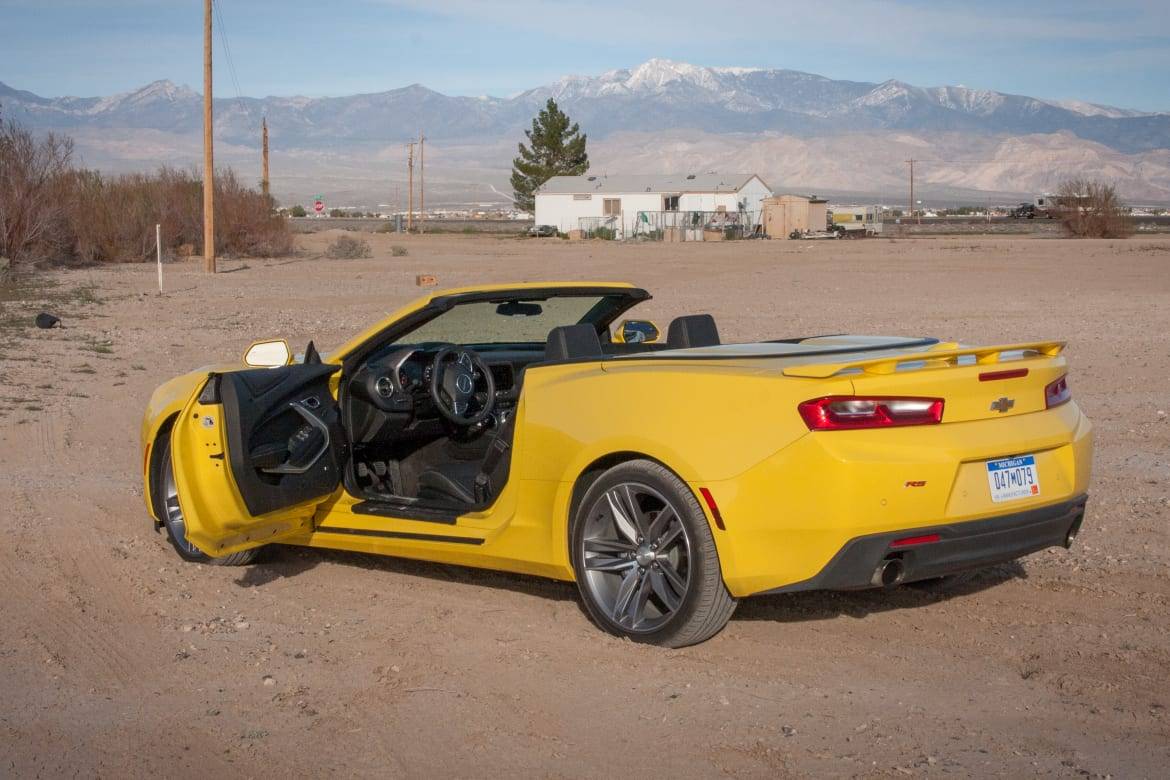
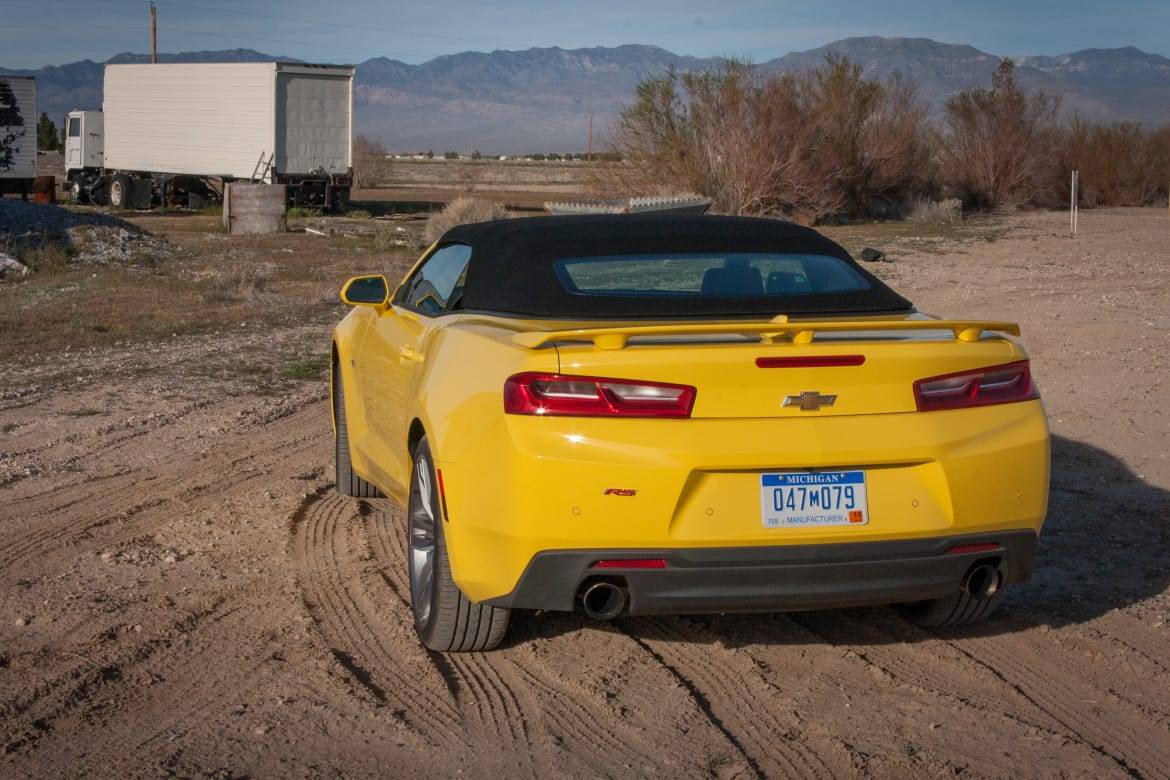
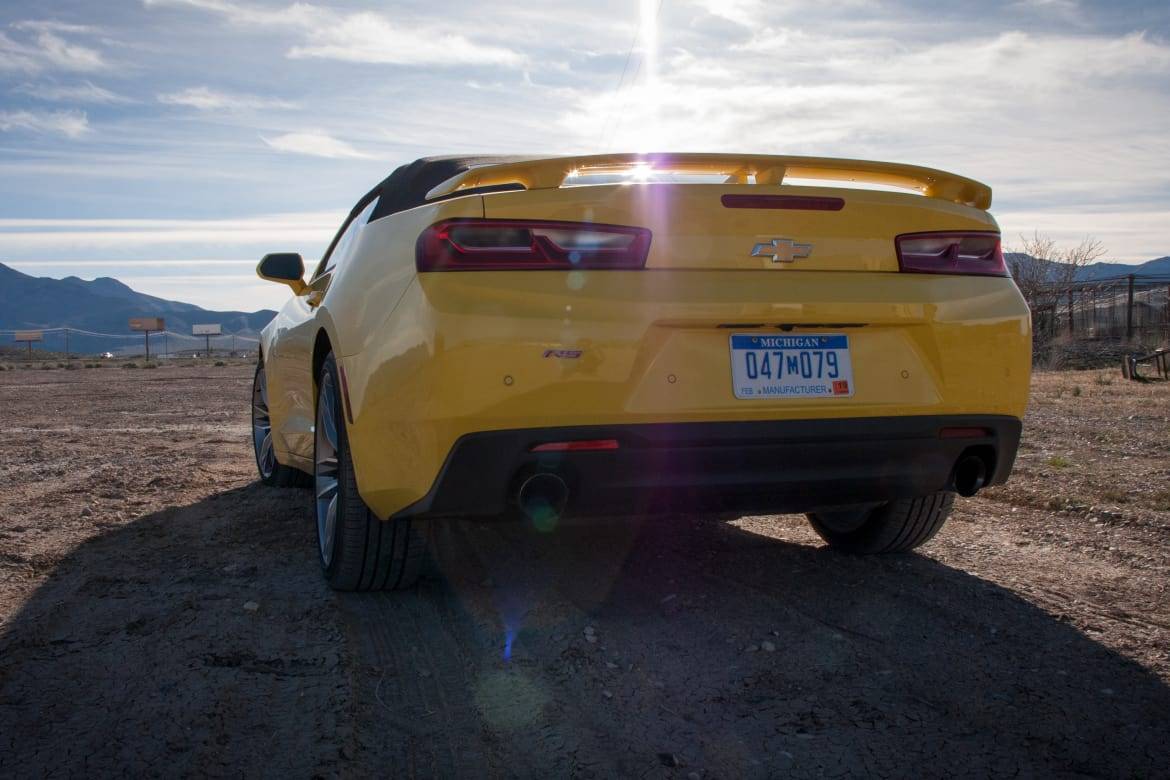
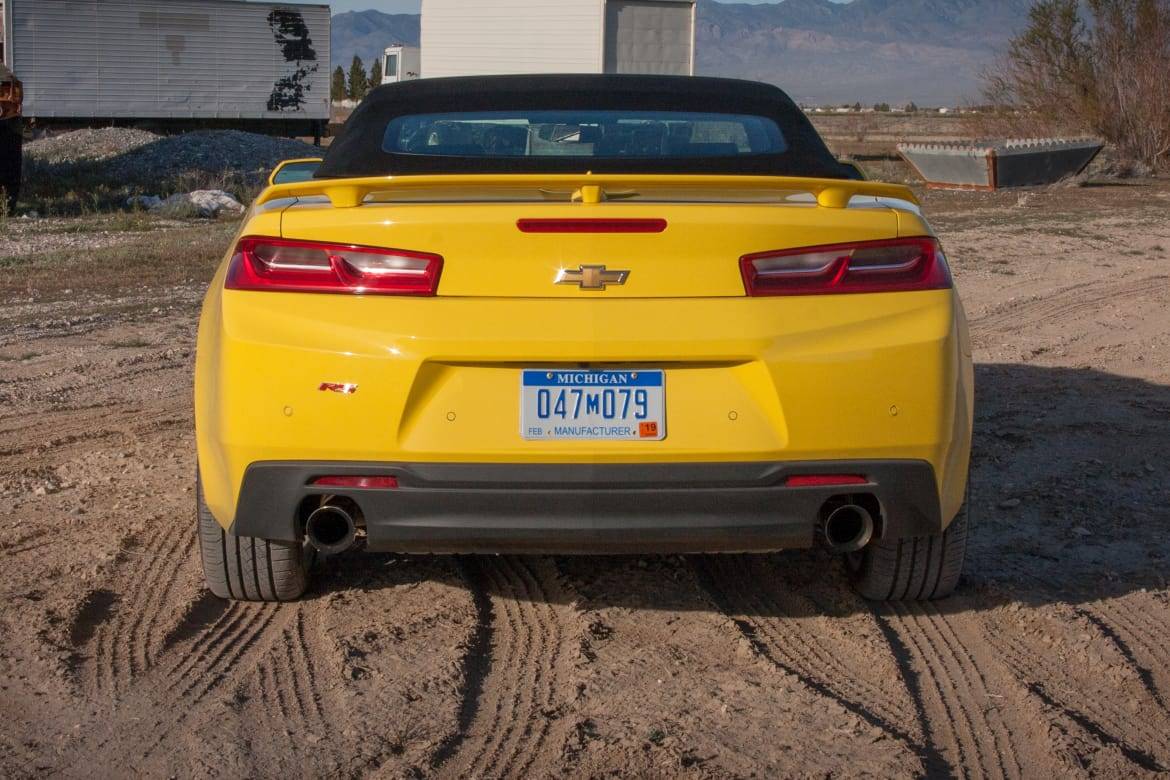
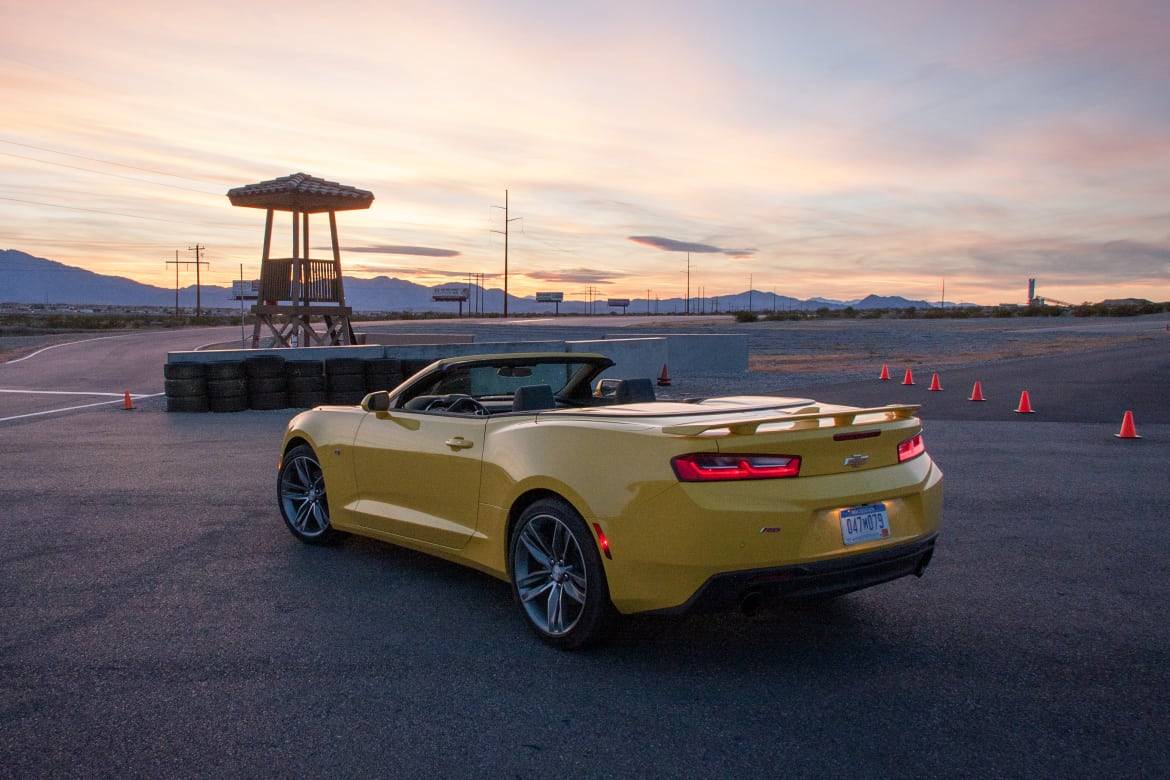
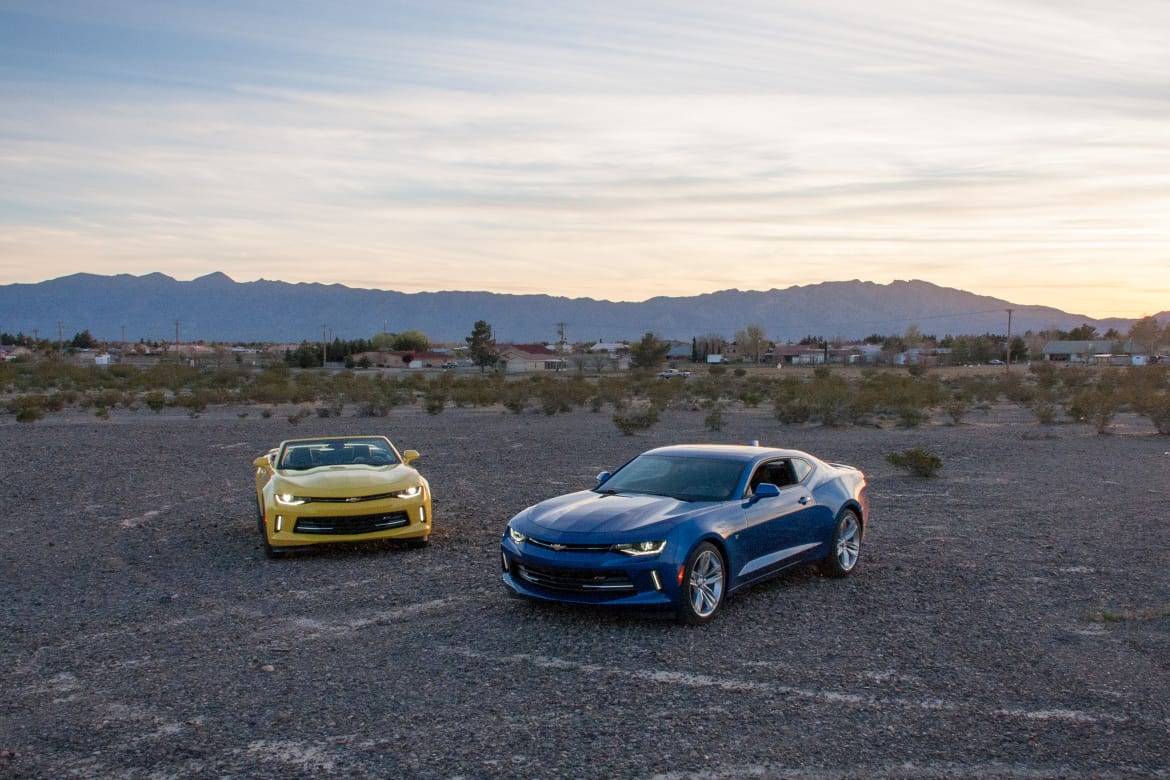
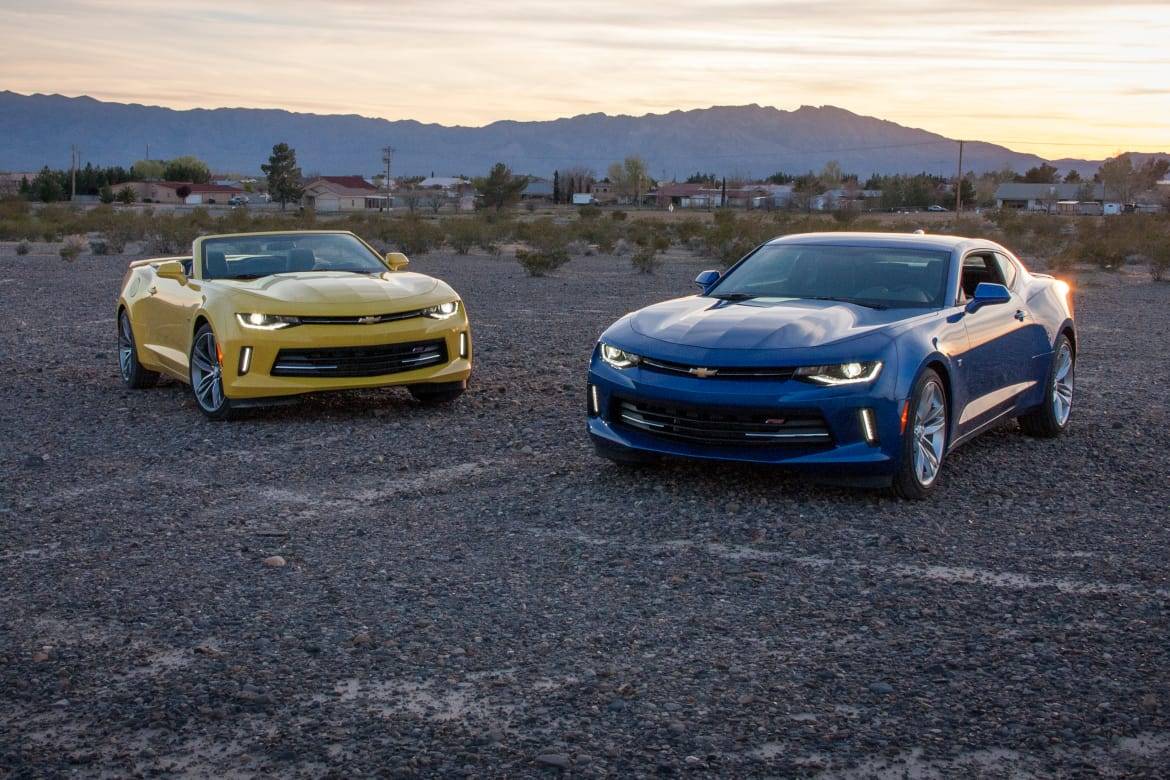

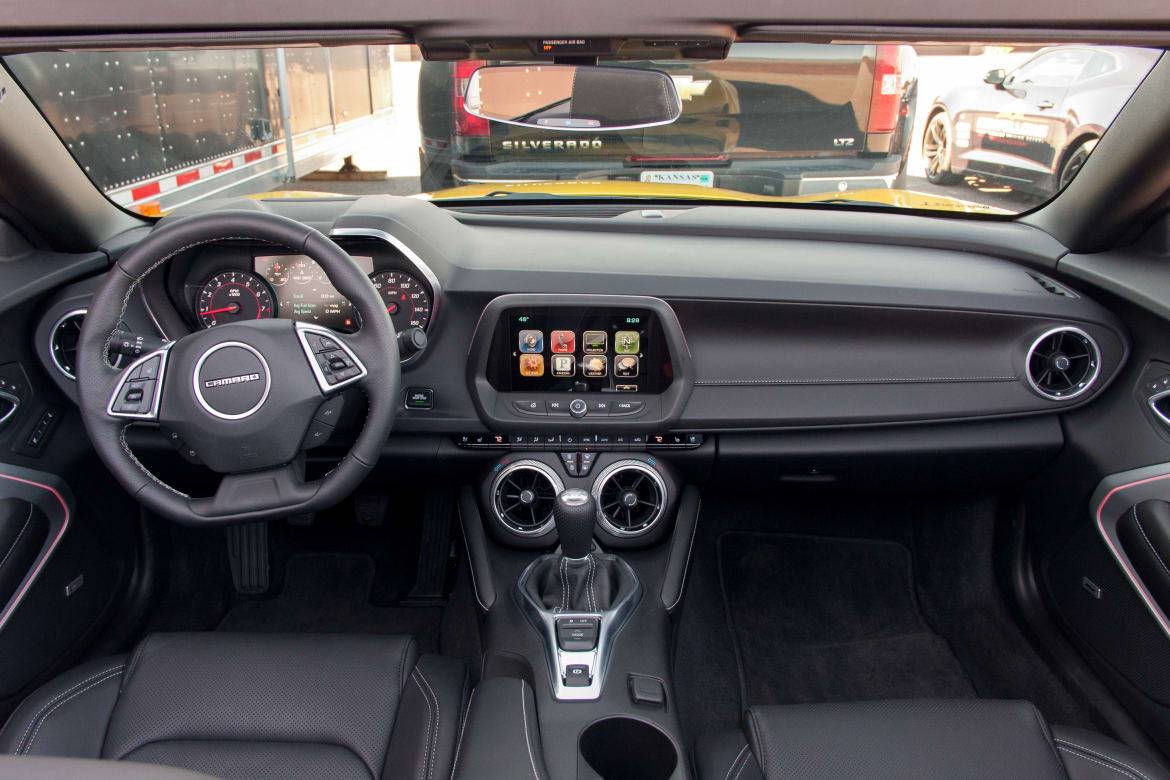
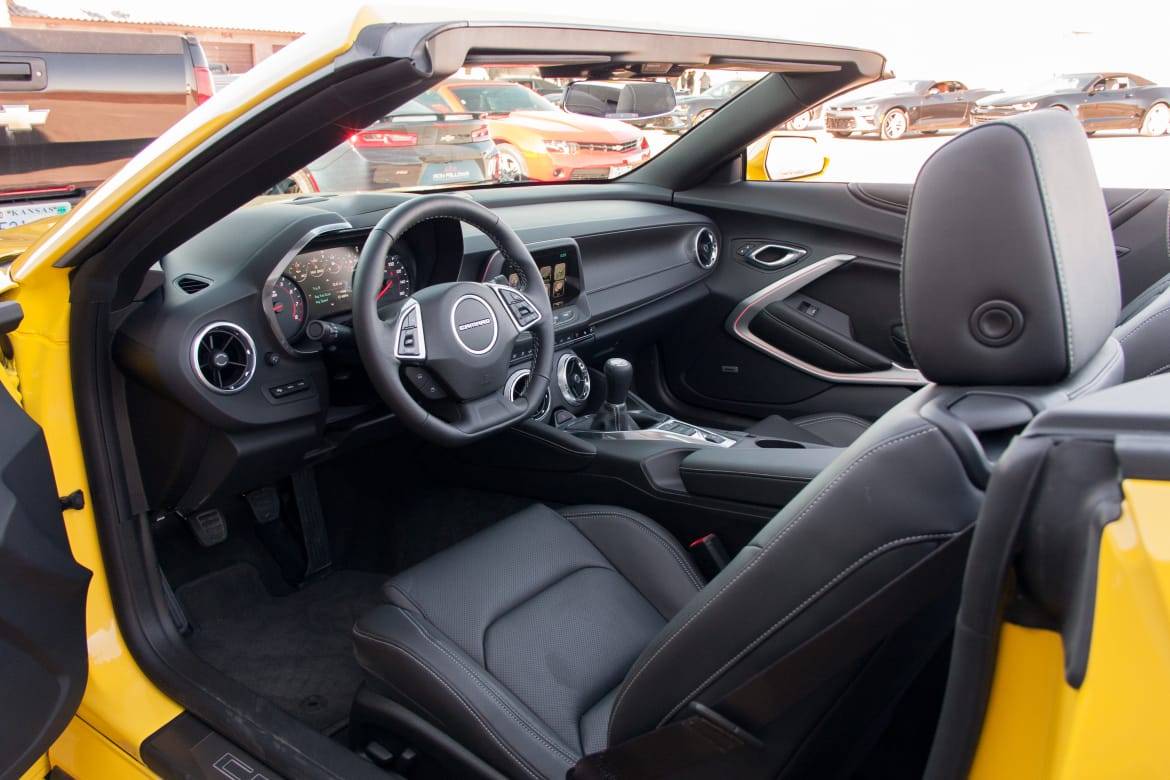
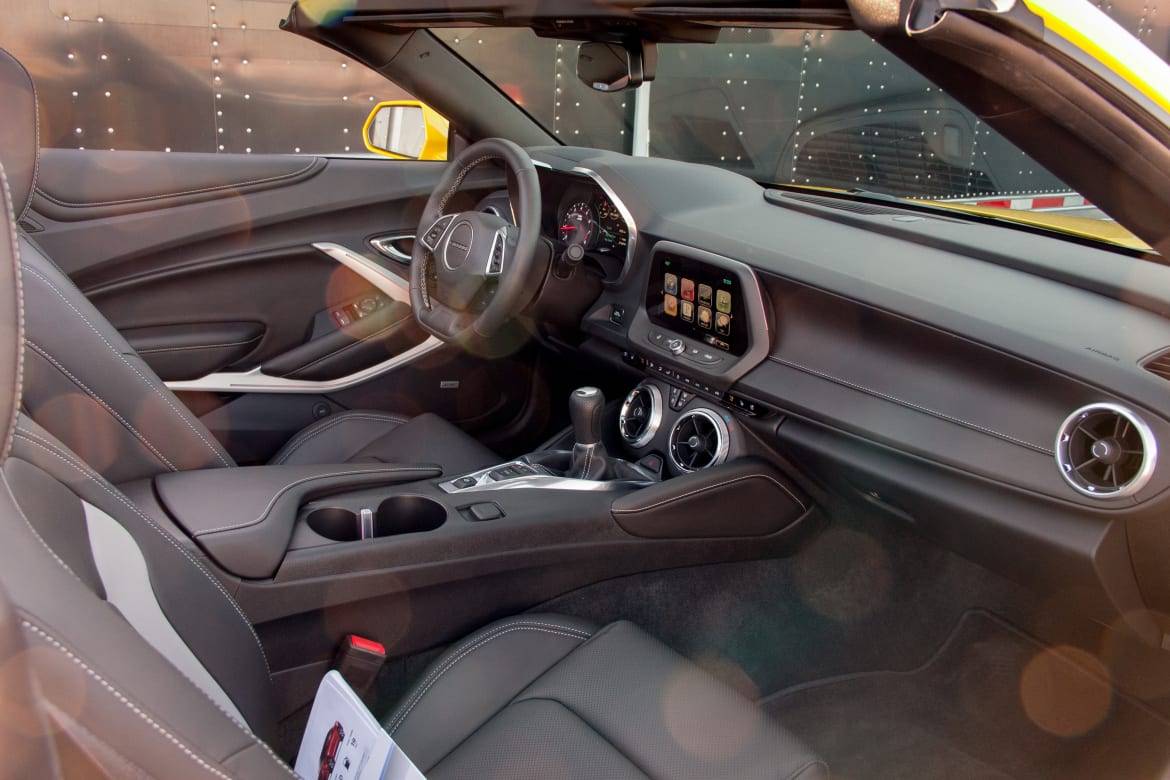
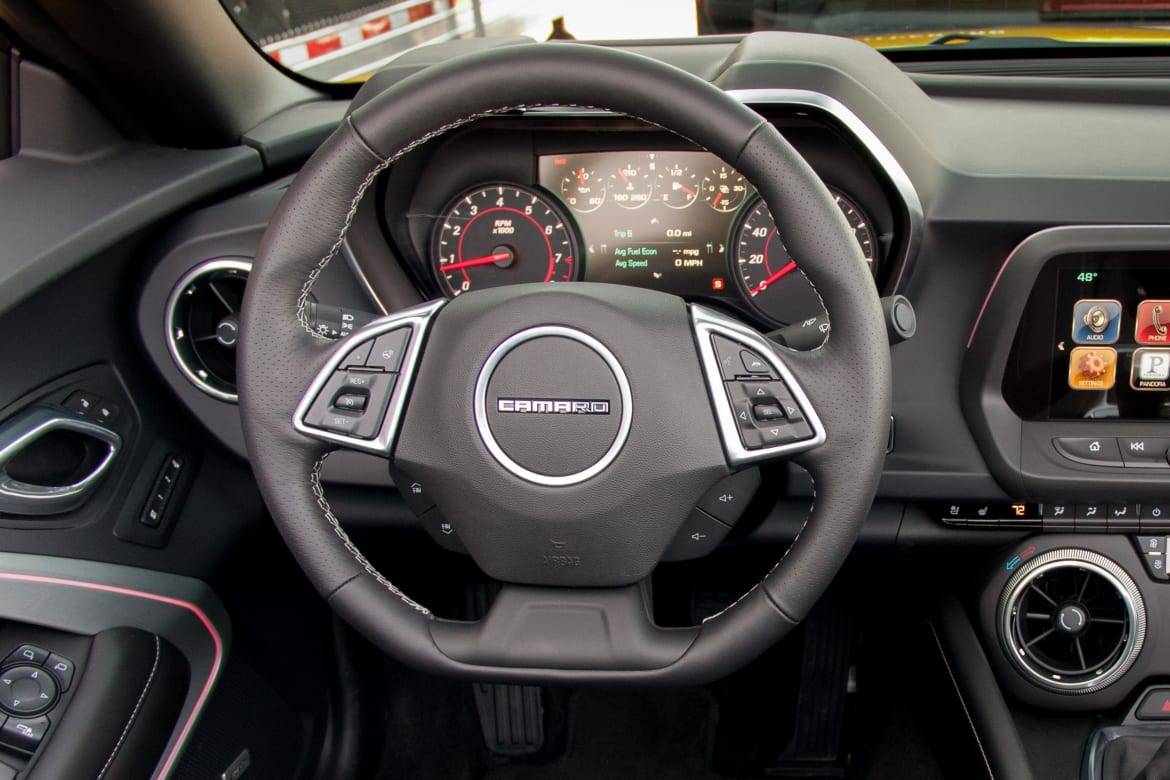
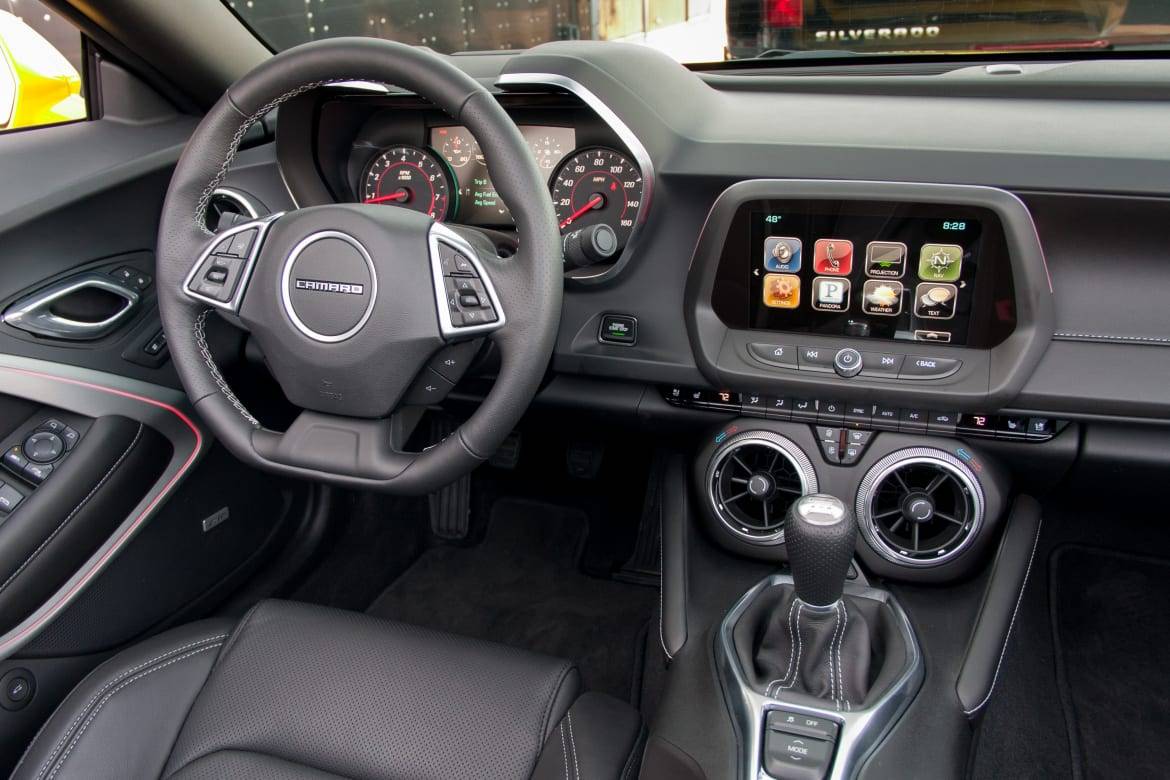
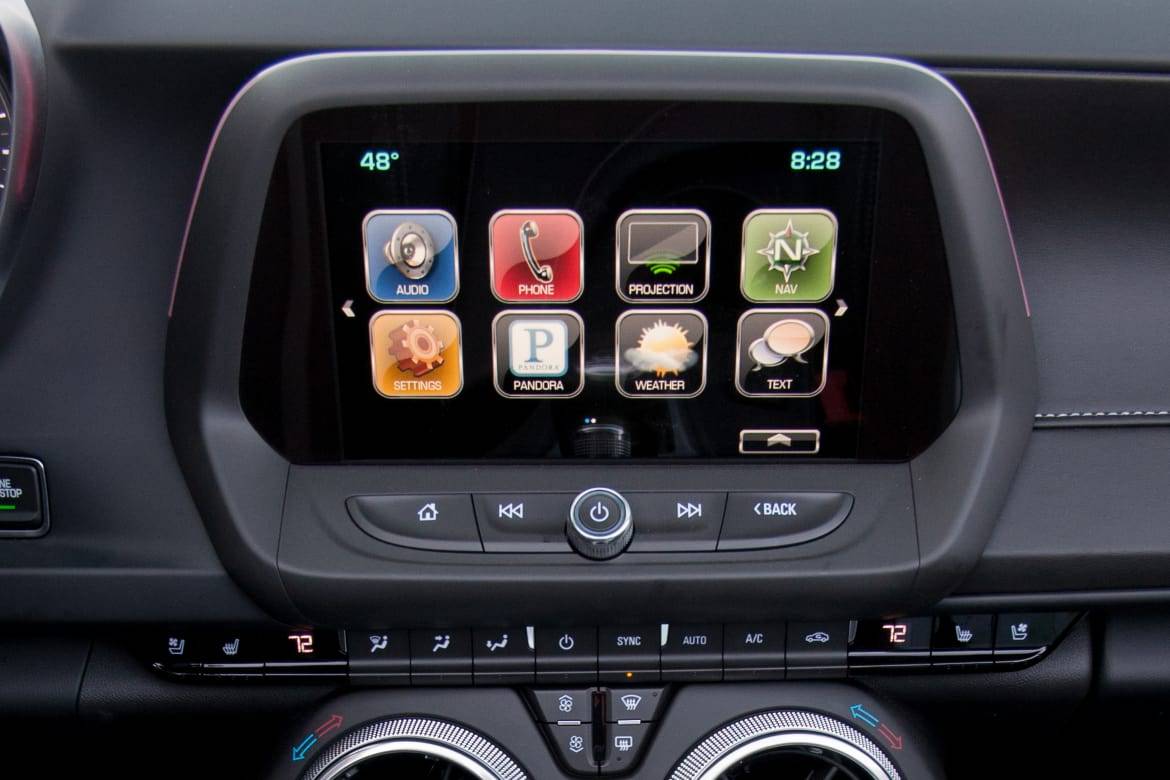

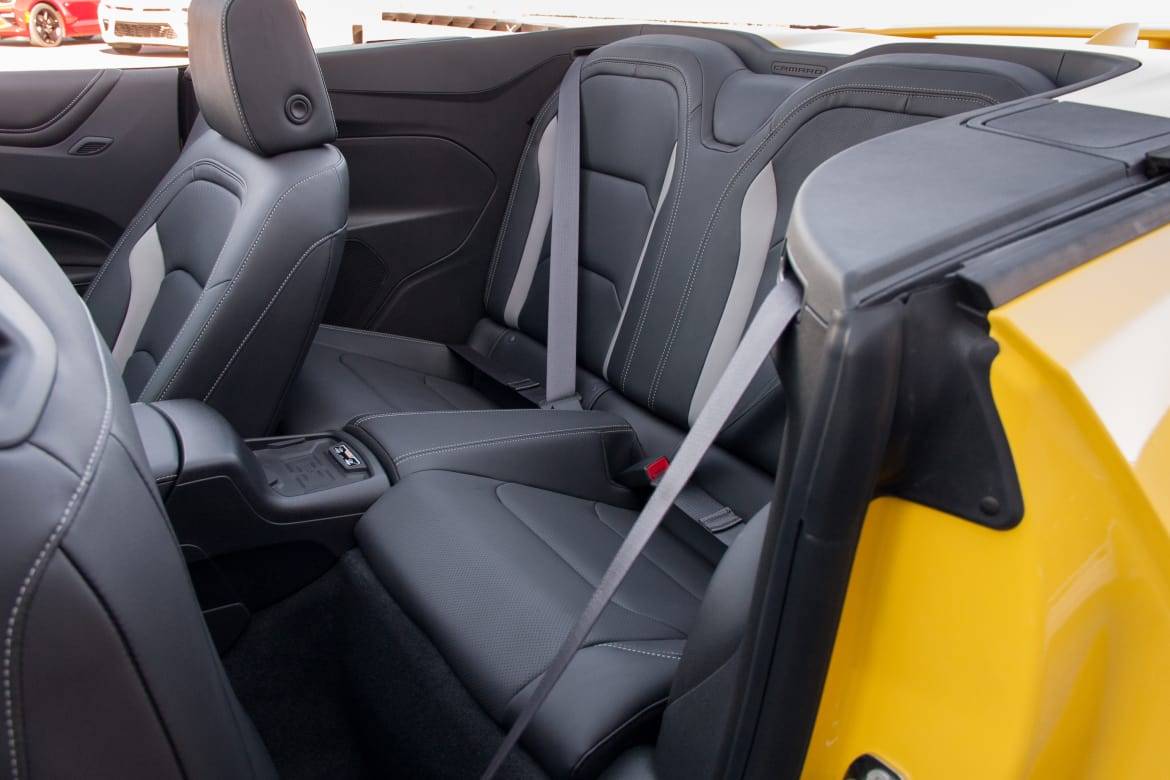
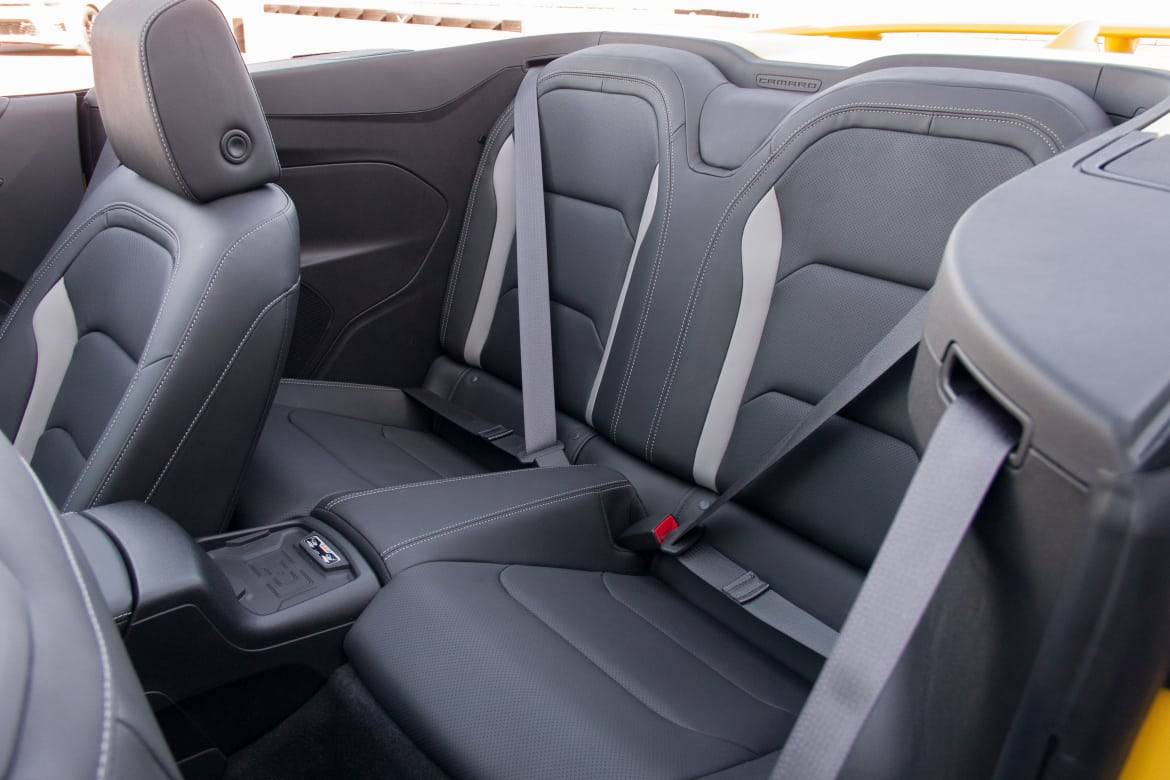
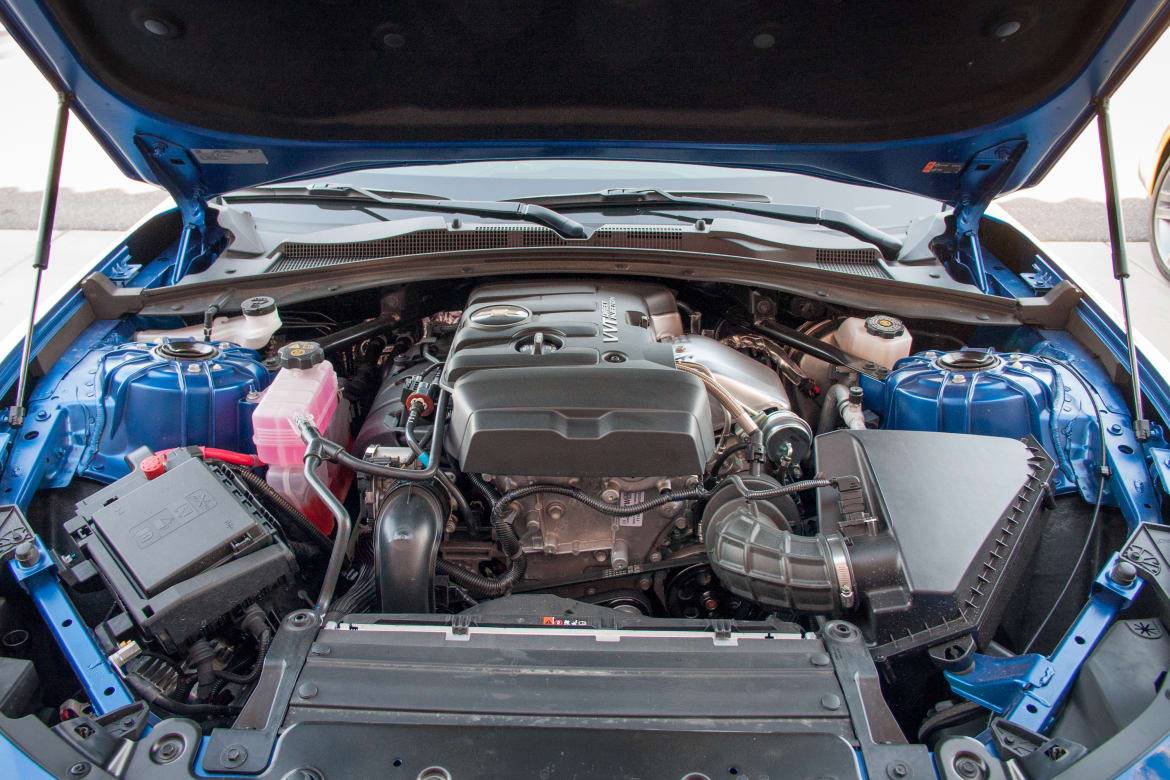
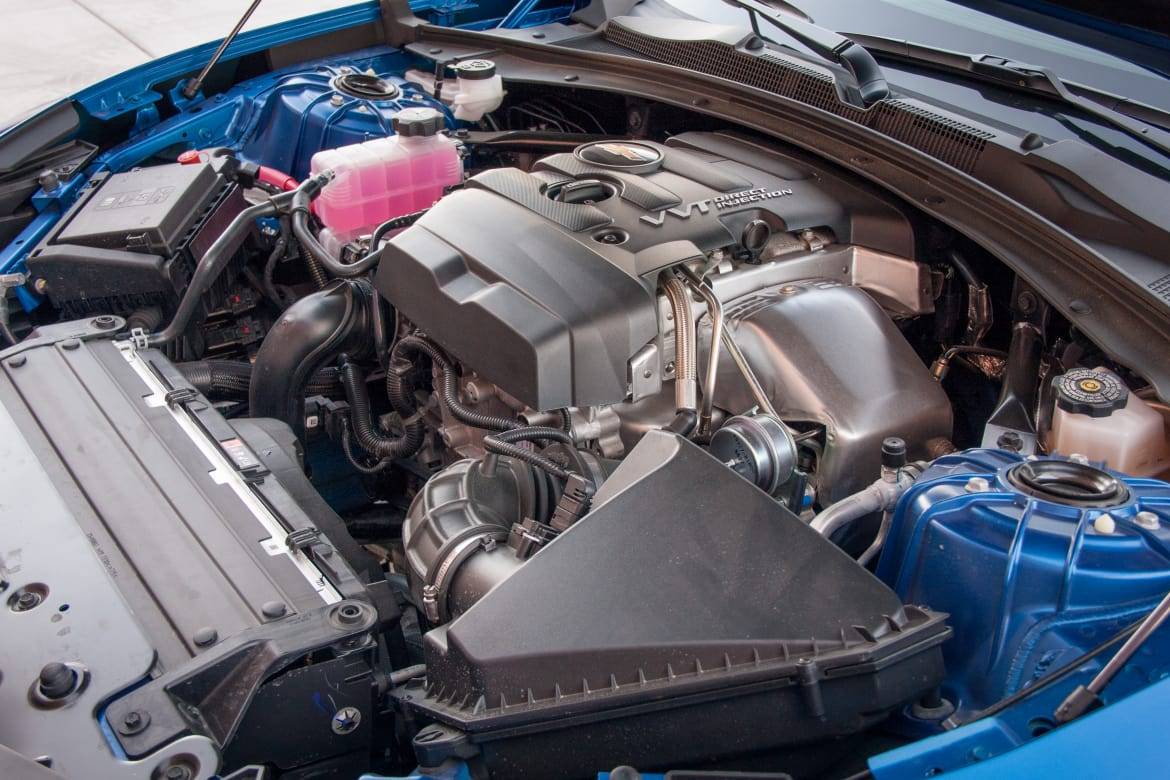








































Former L.A. Bureau Chief Brian Wong is a California native with a soft spot for convertibles and free parking.
Featured stories

15-Year Car Loans Aren’t a Thing, But Americans Are Getting More Comfortable With Long Loan Terms

2025 Kia Telluride Review: Rougher Roads Ahead










































